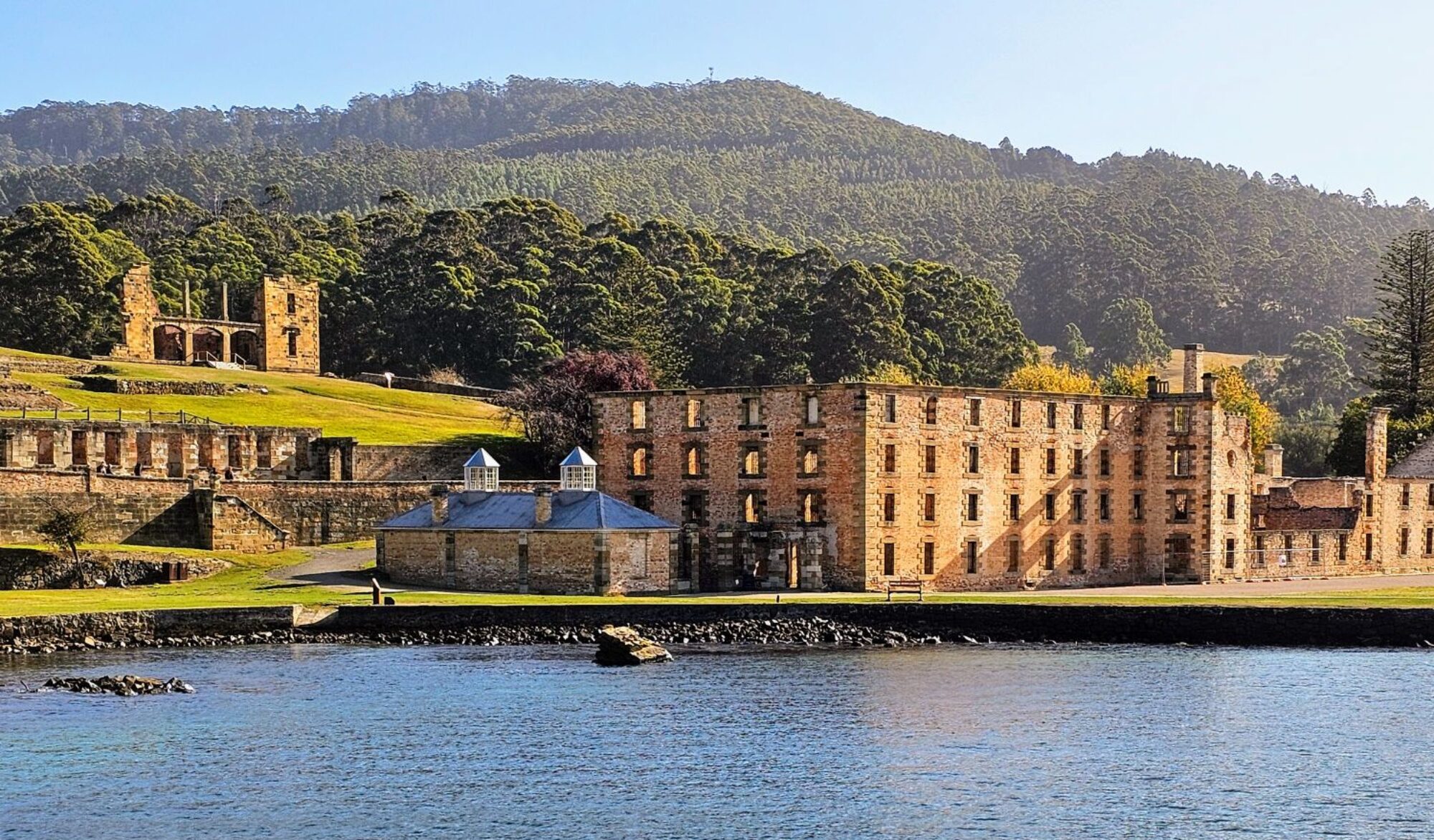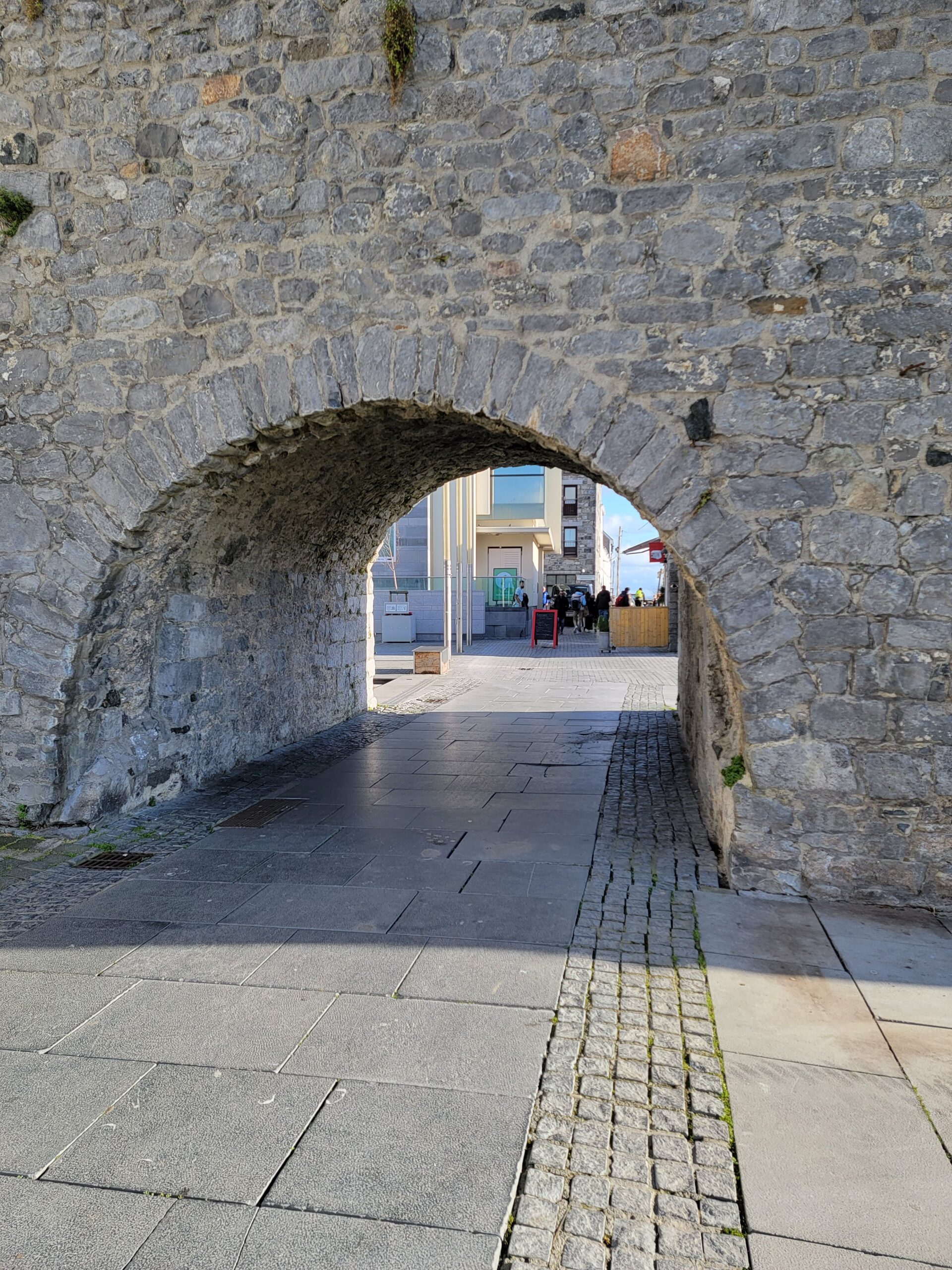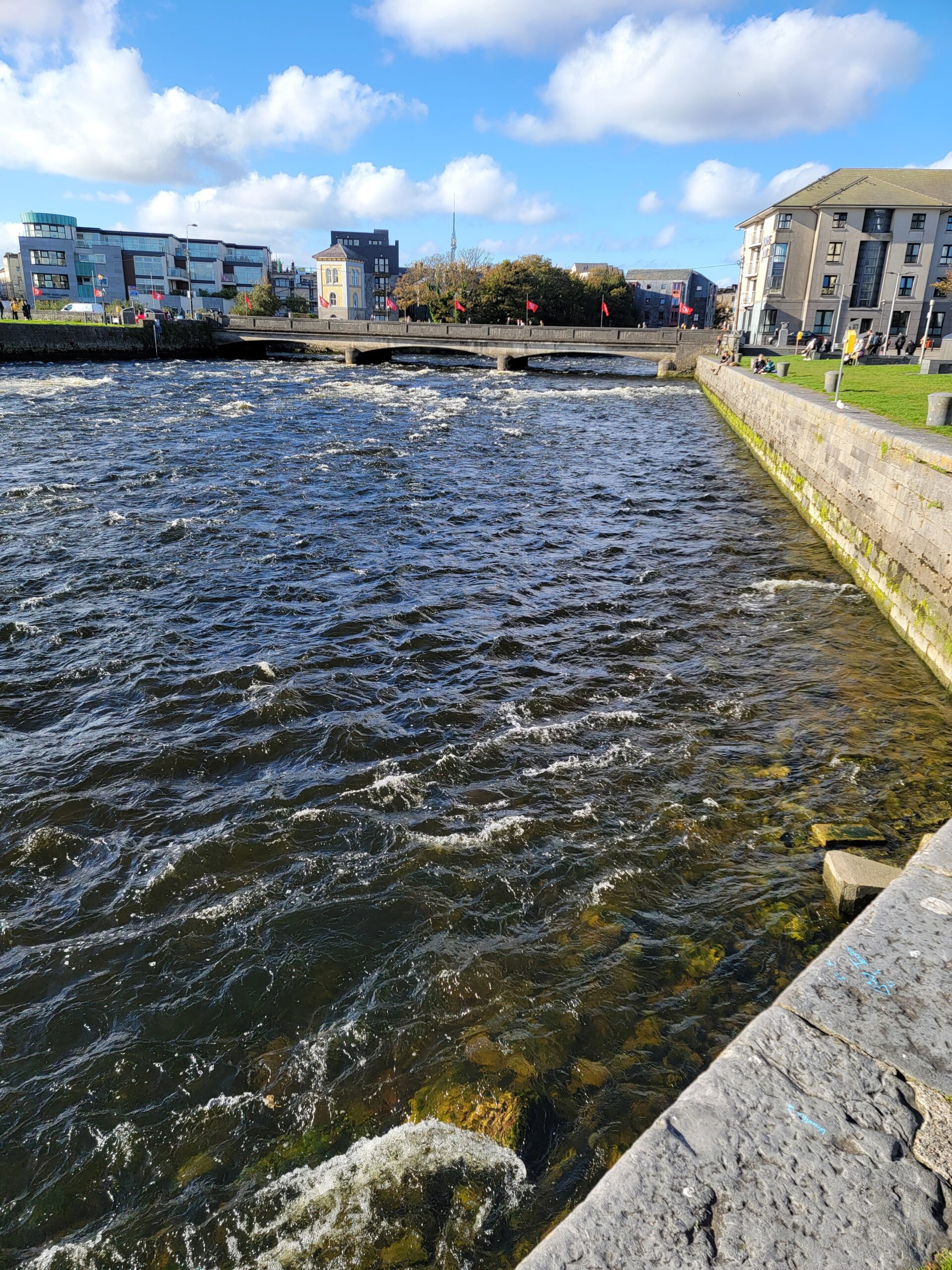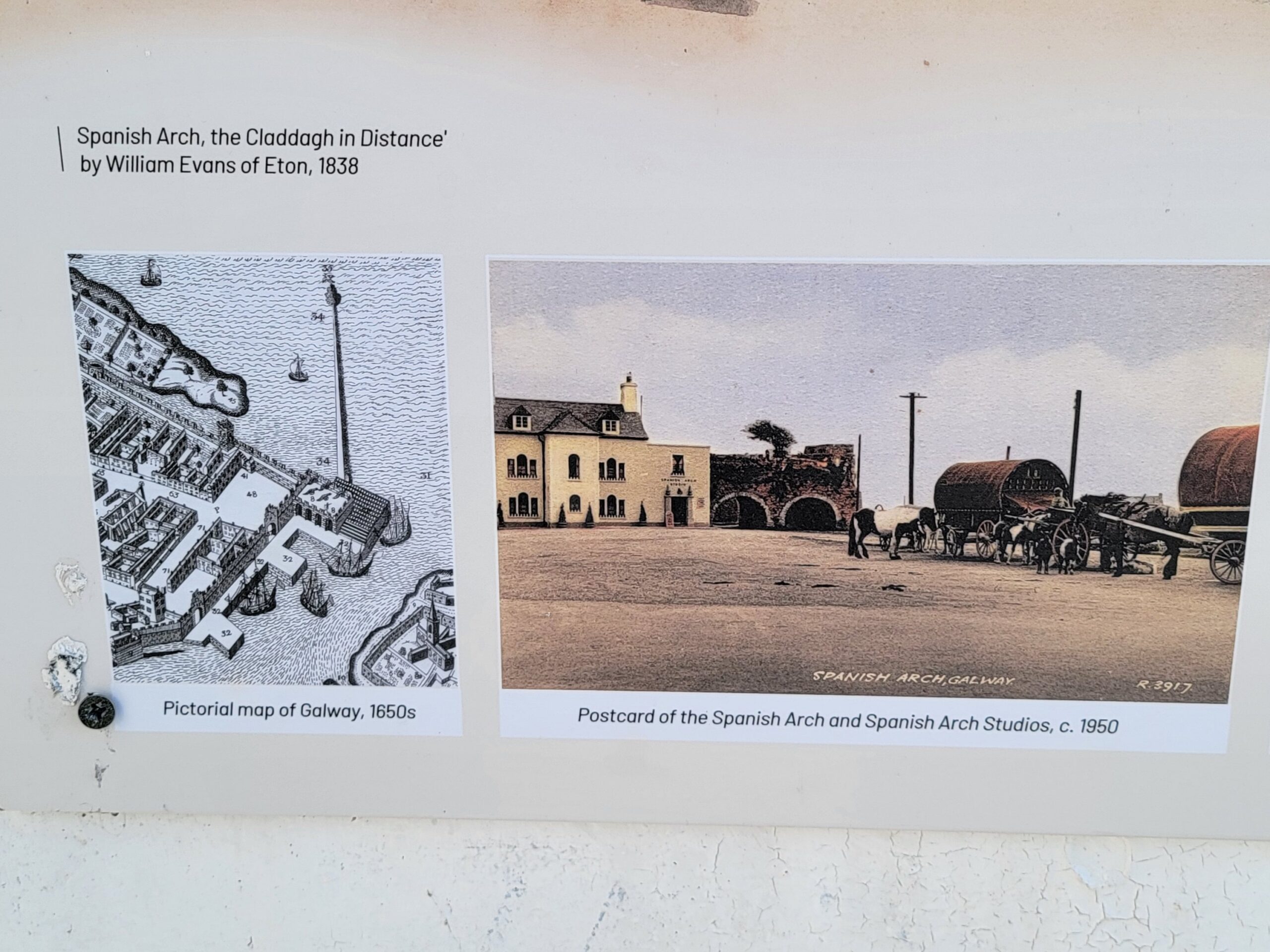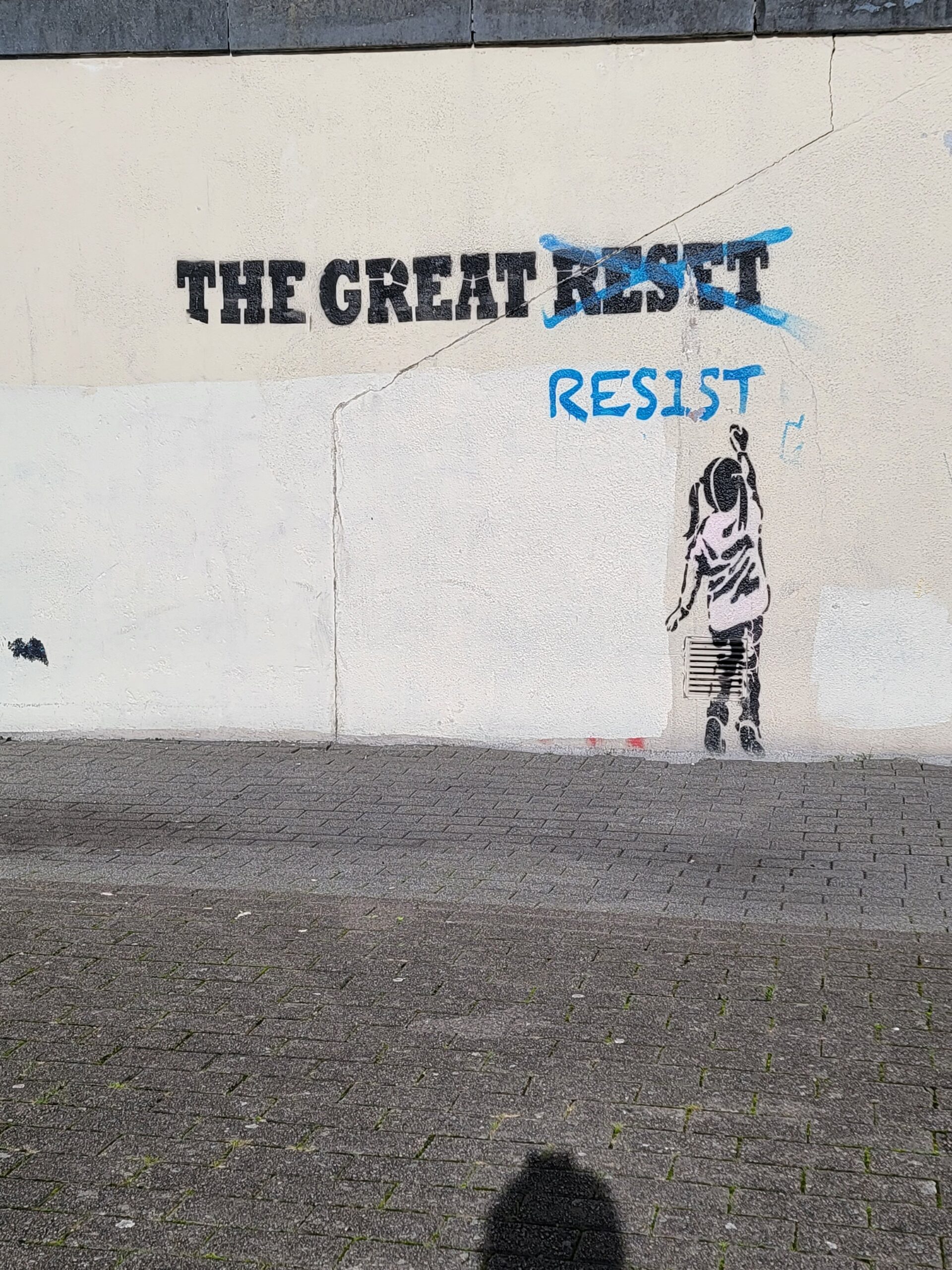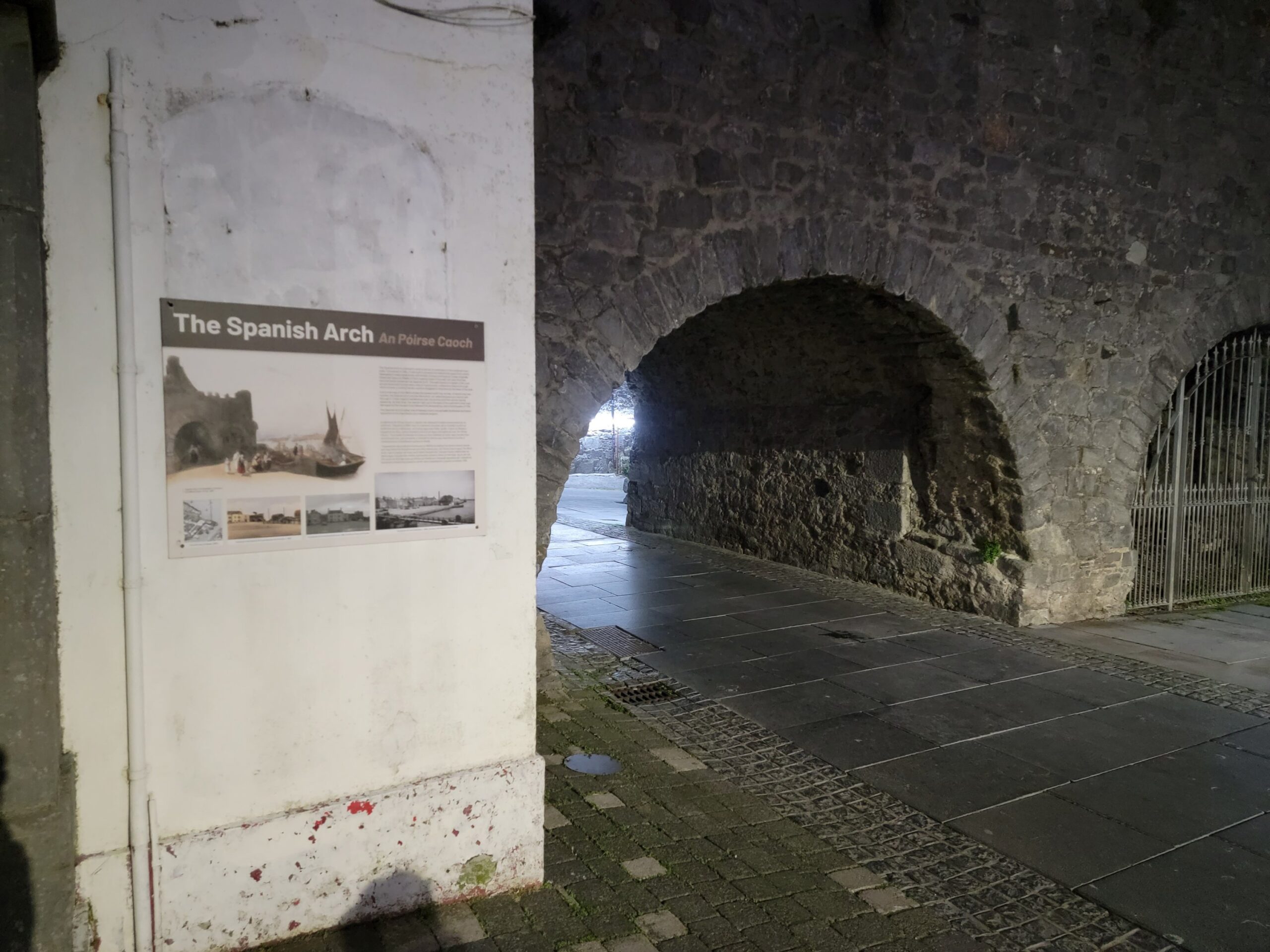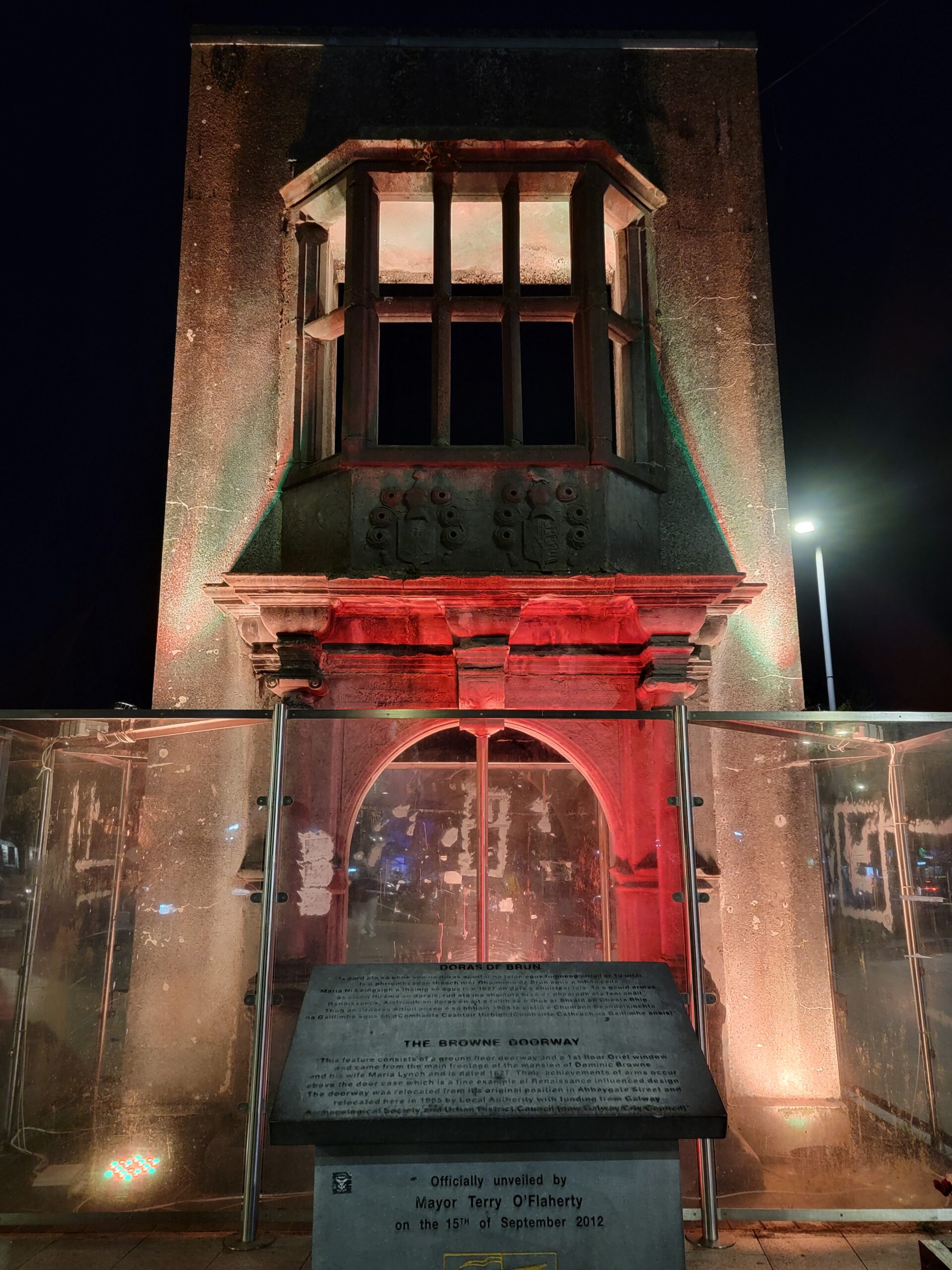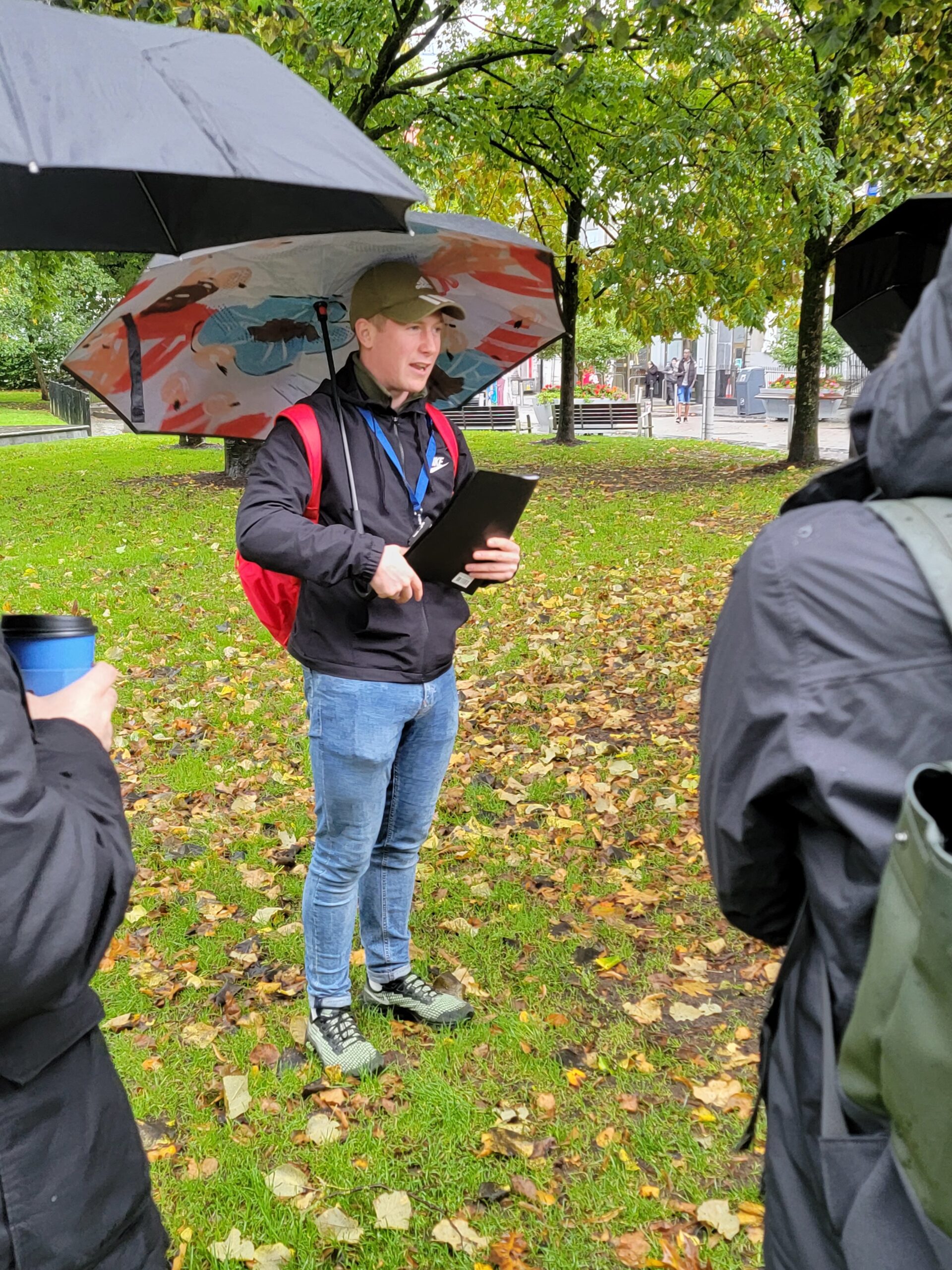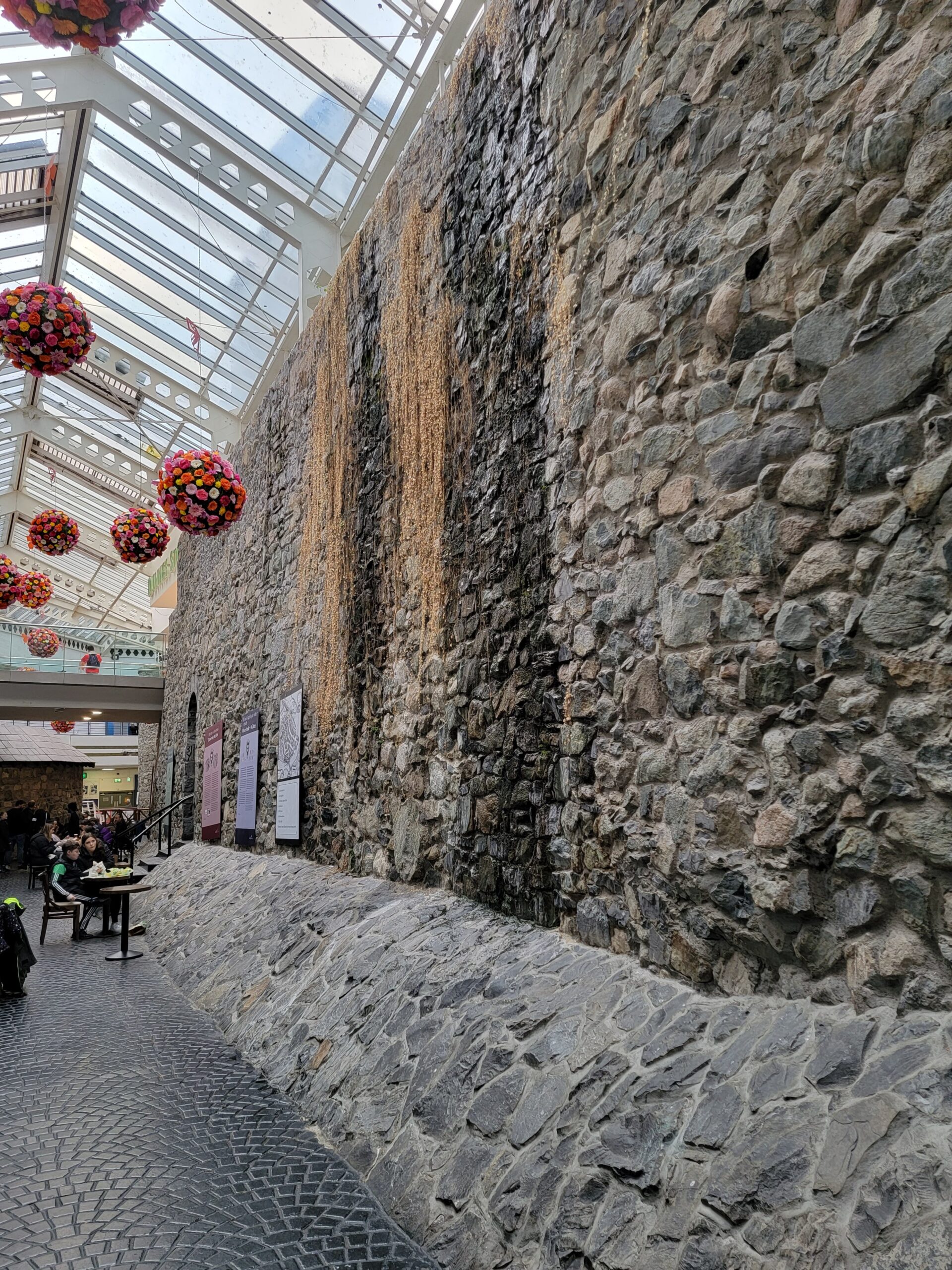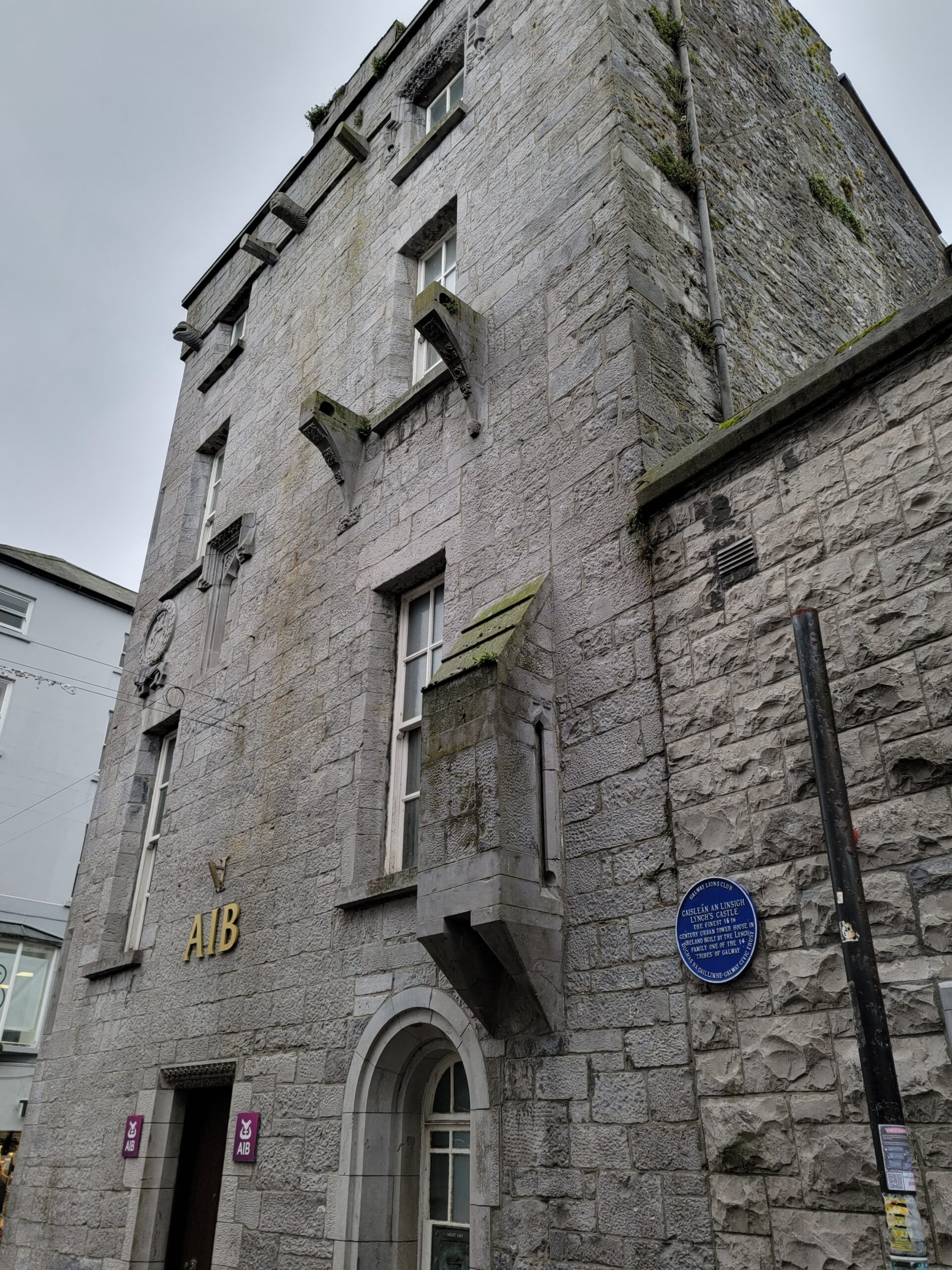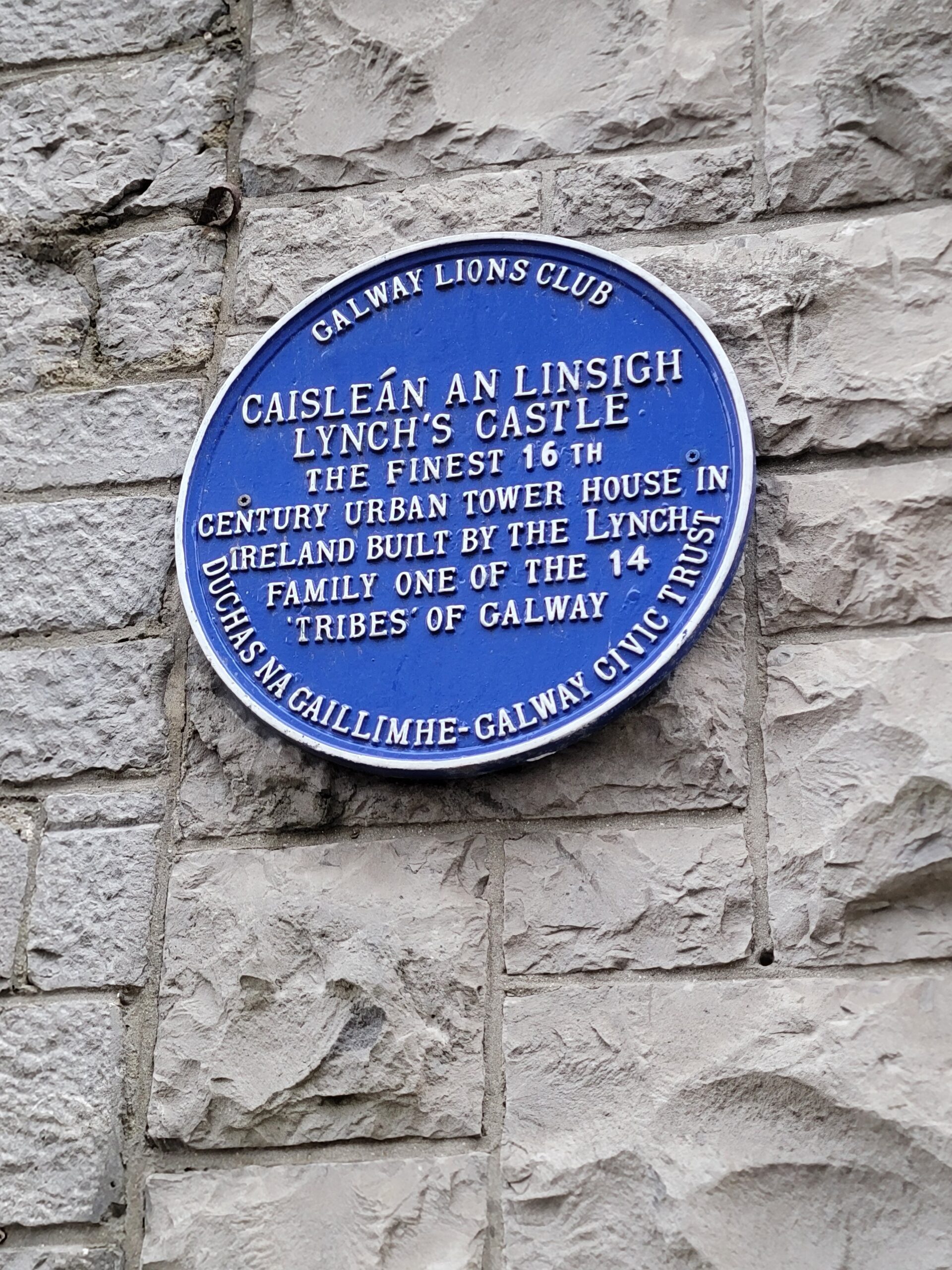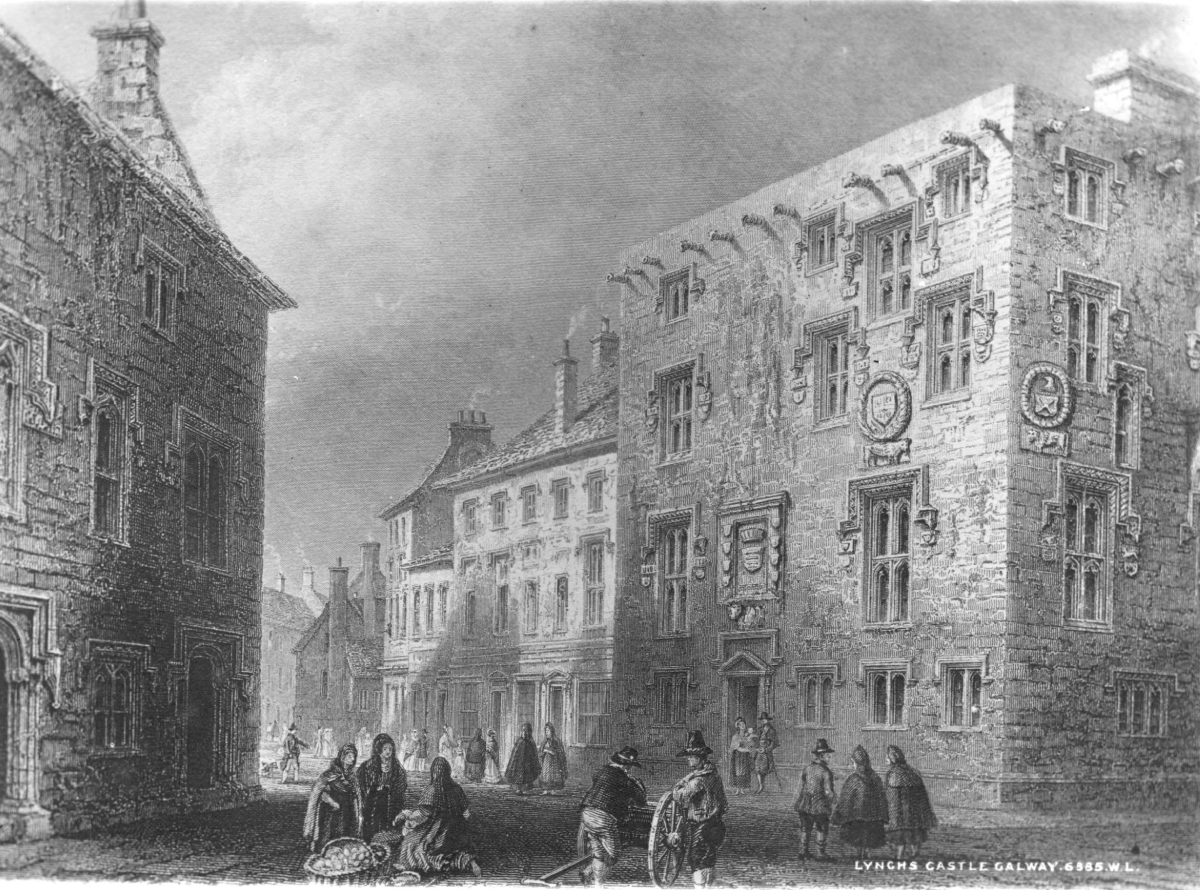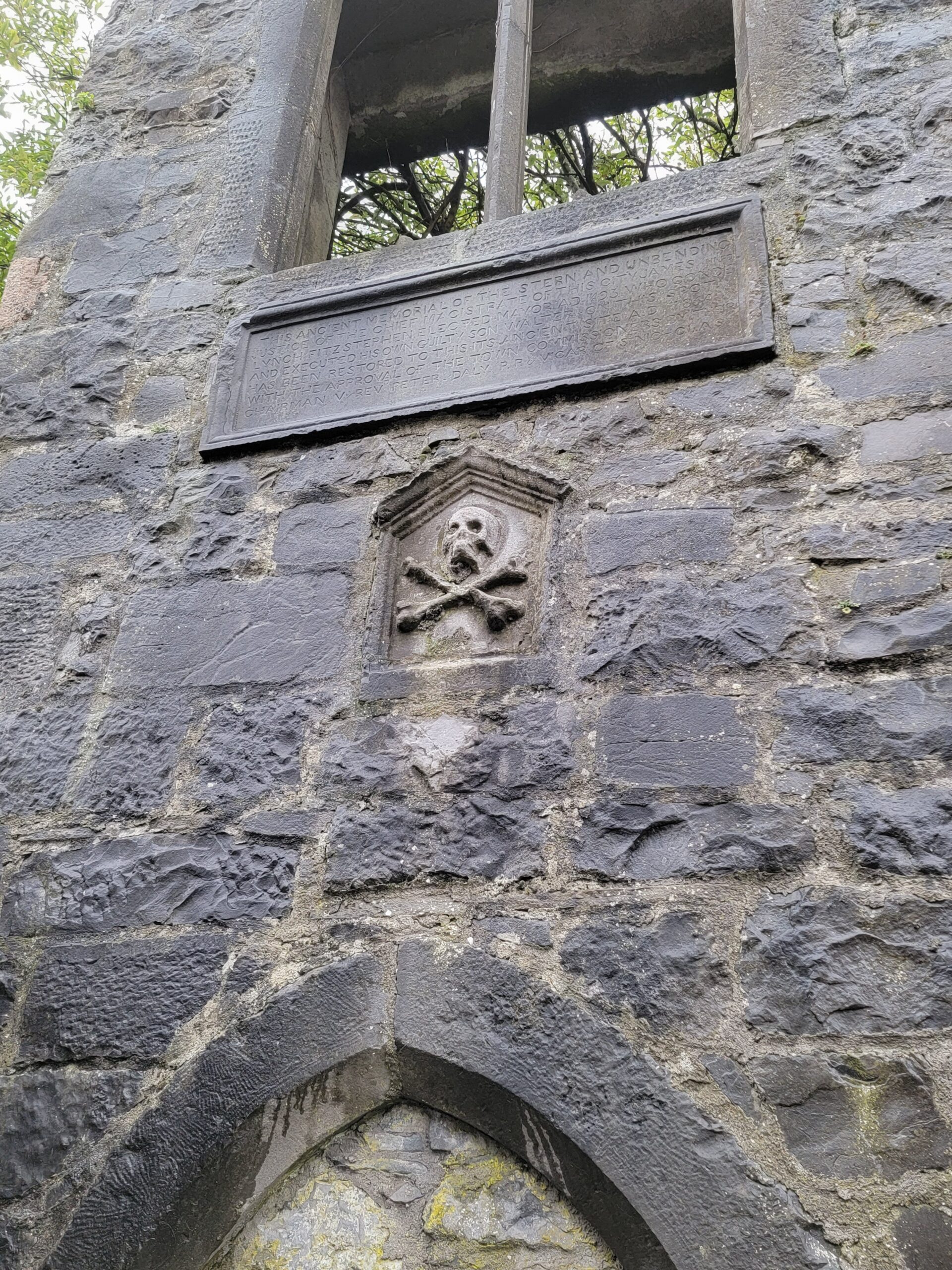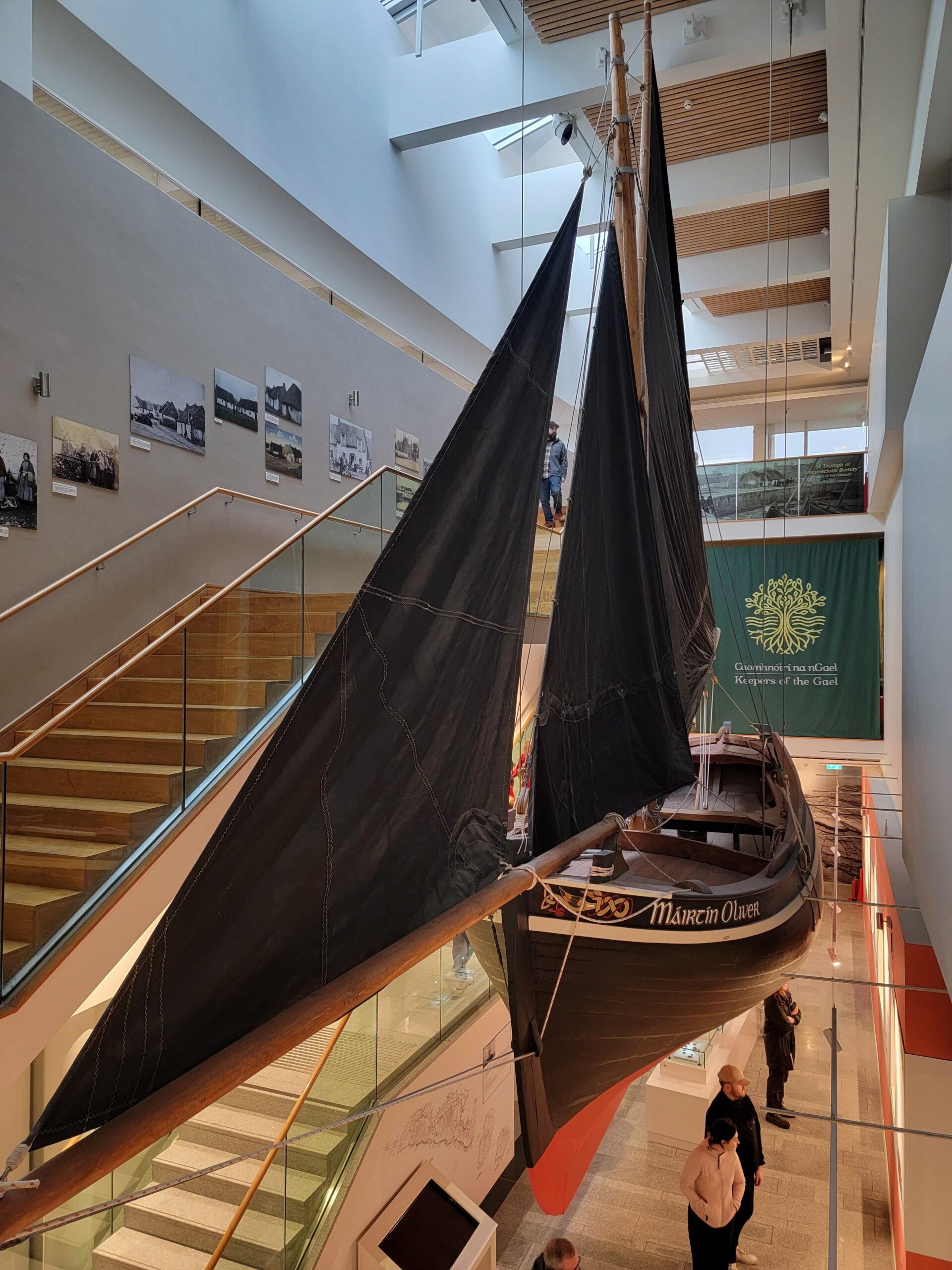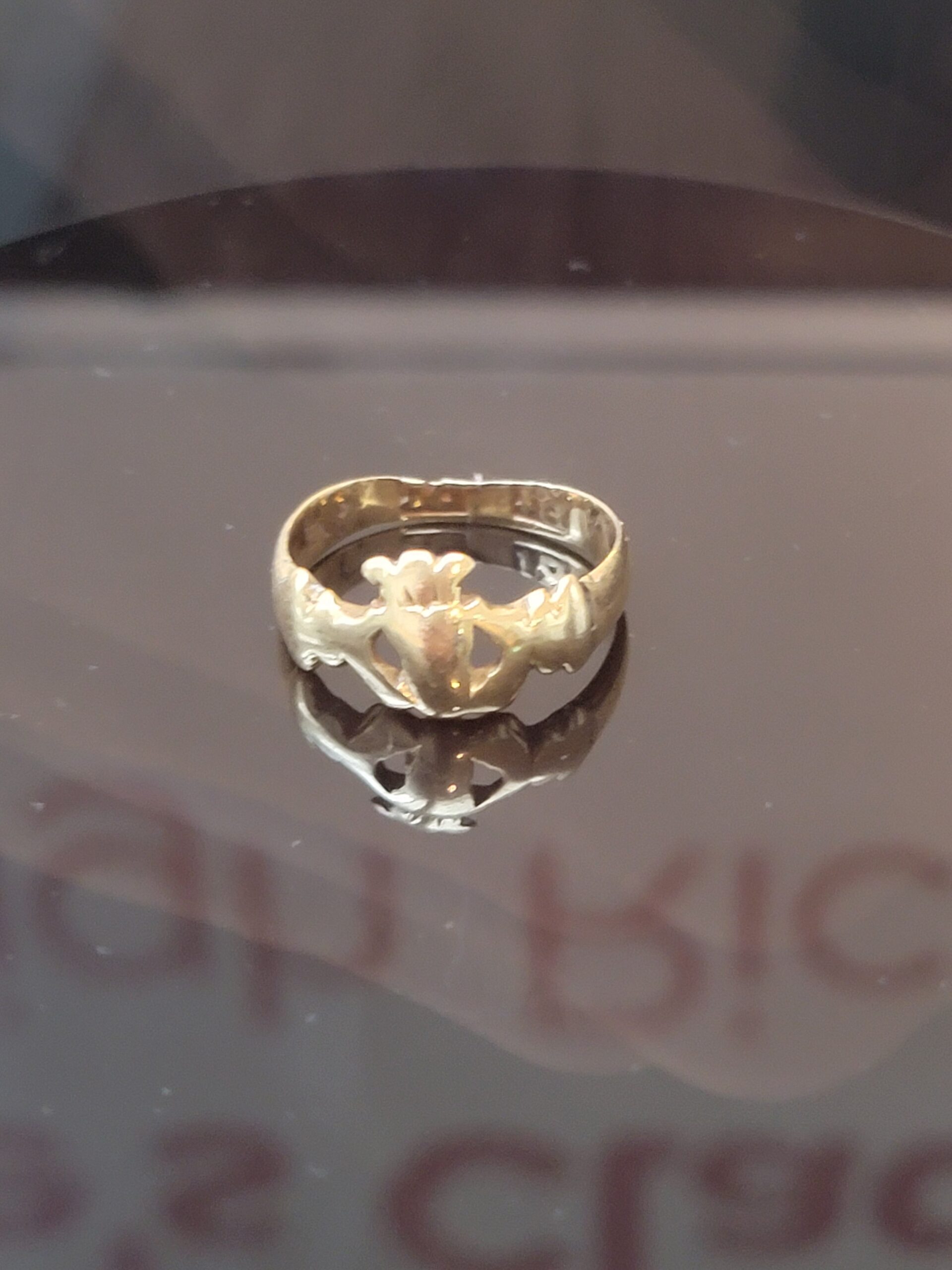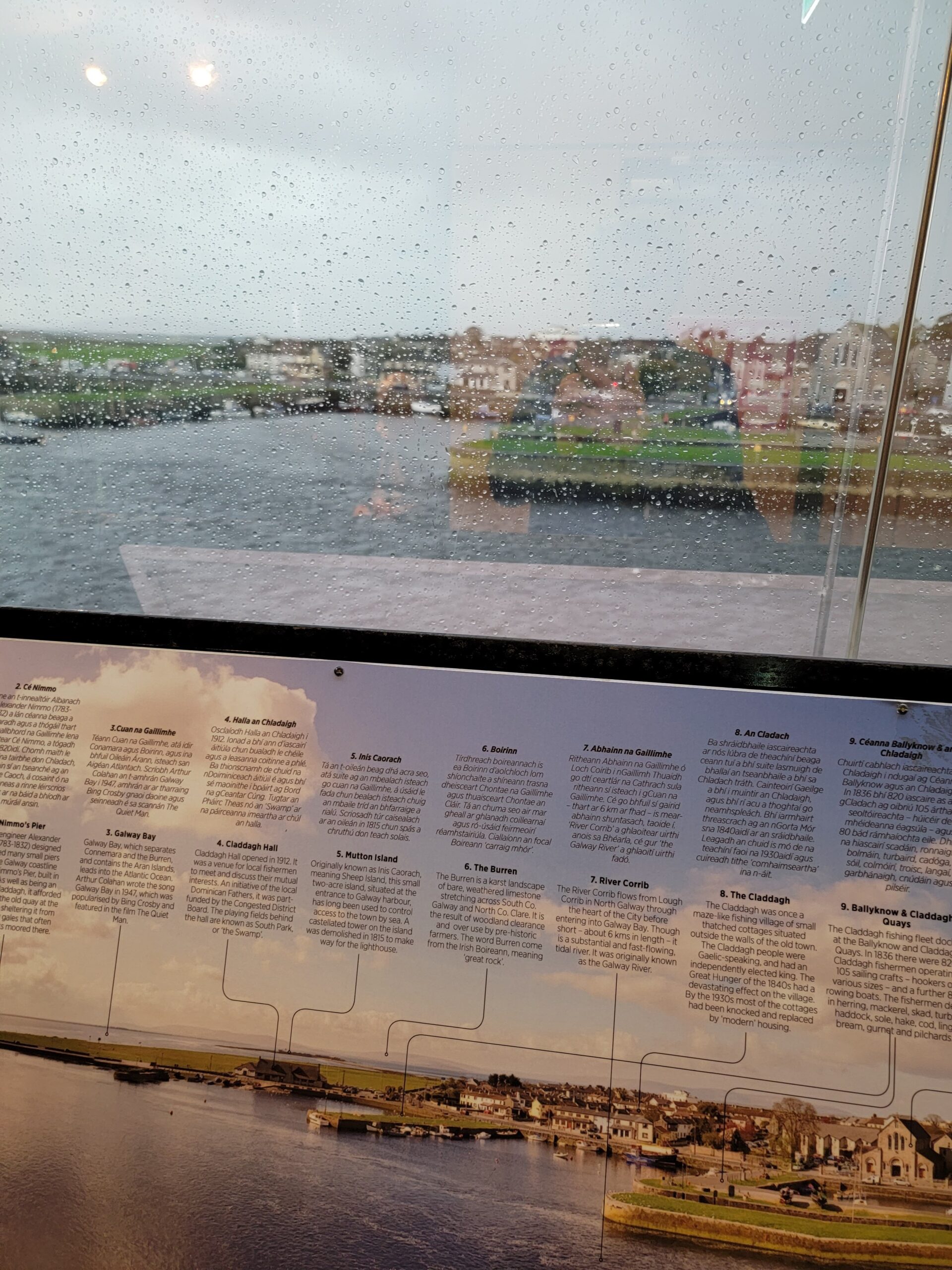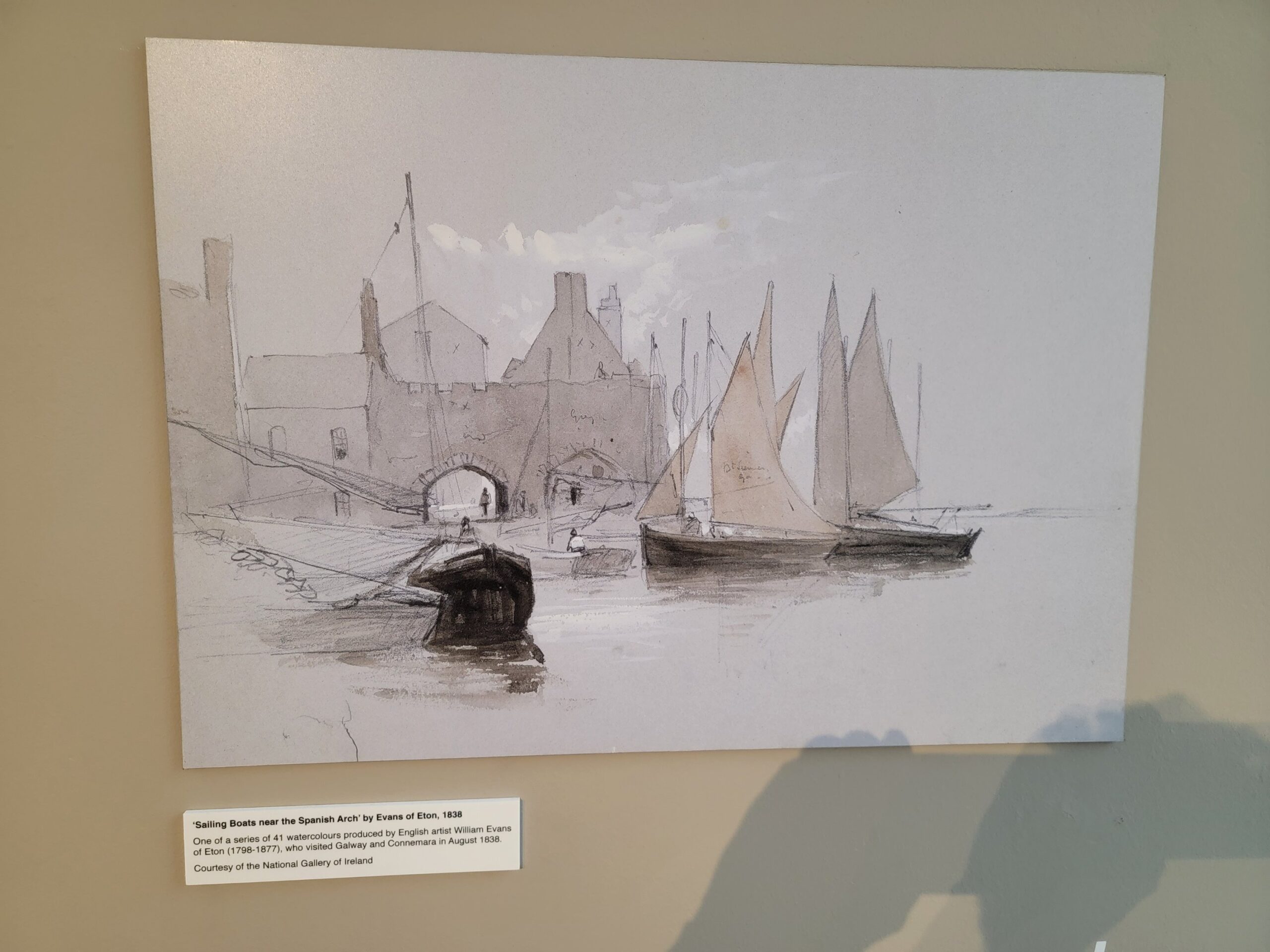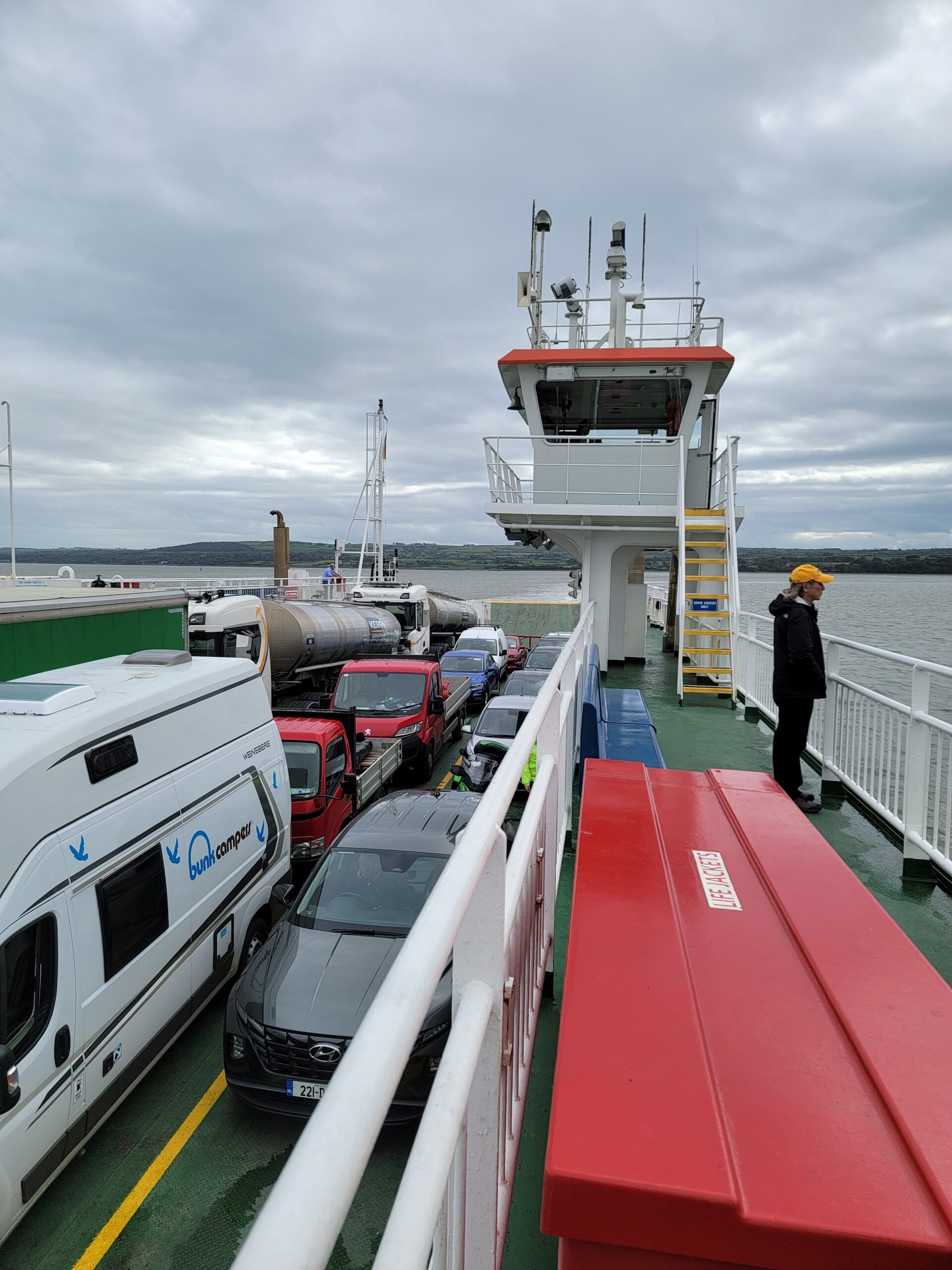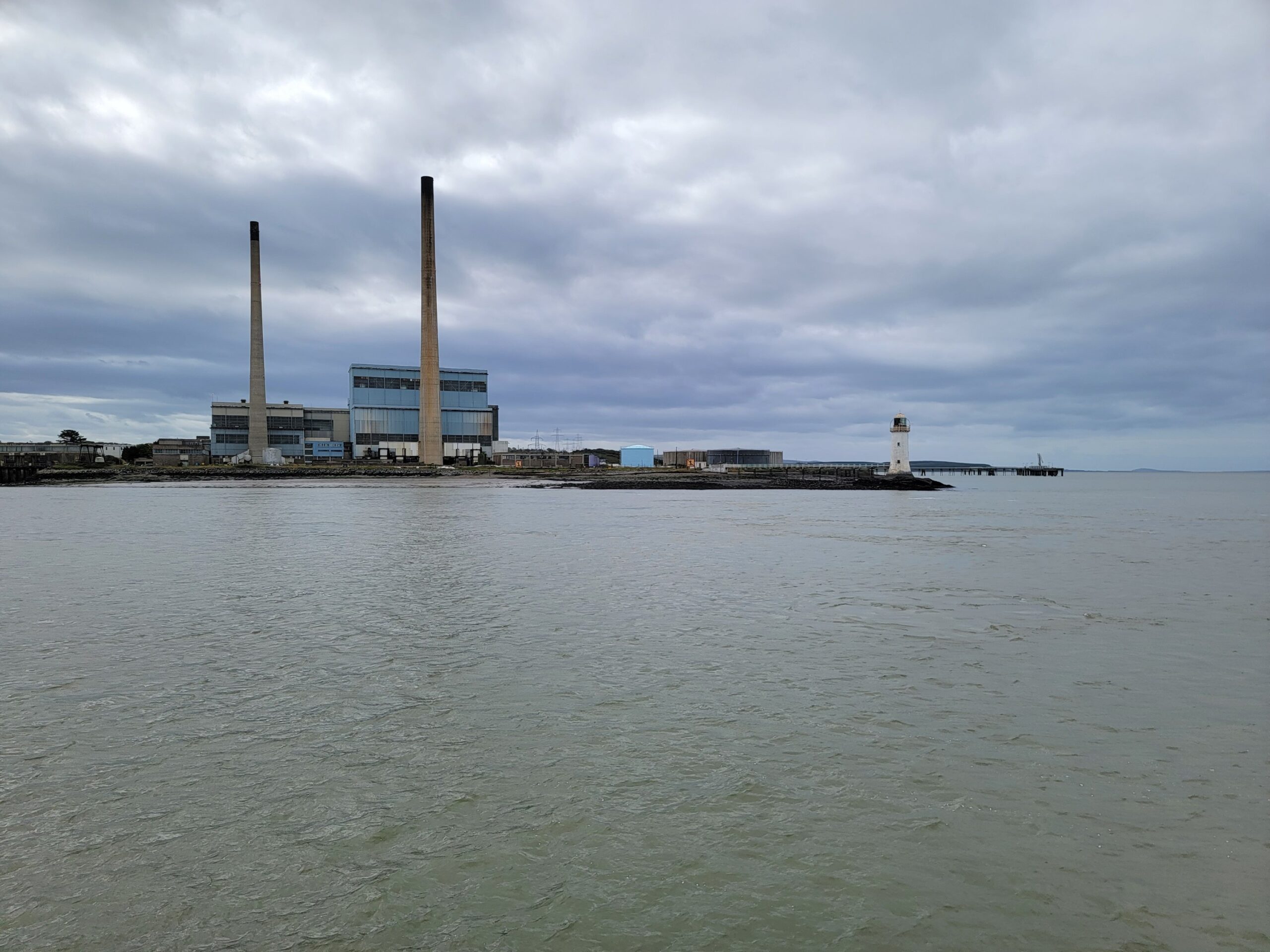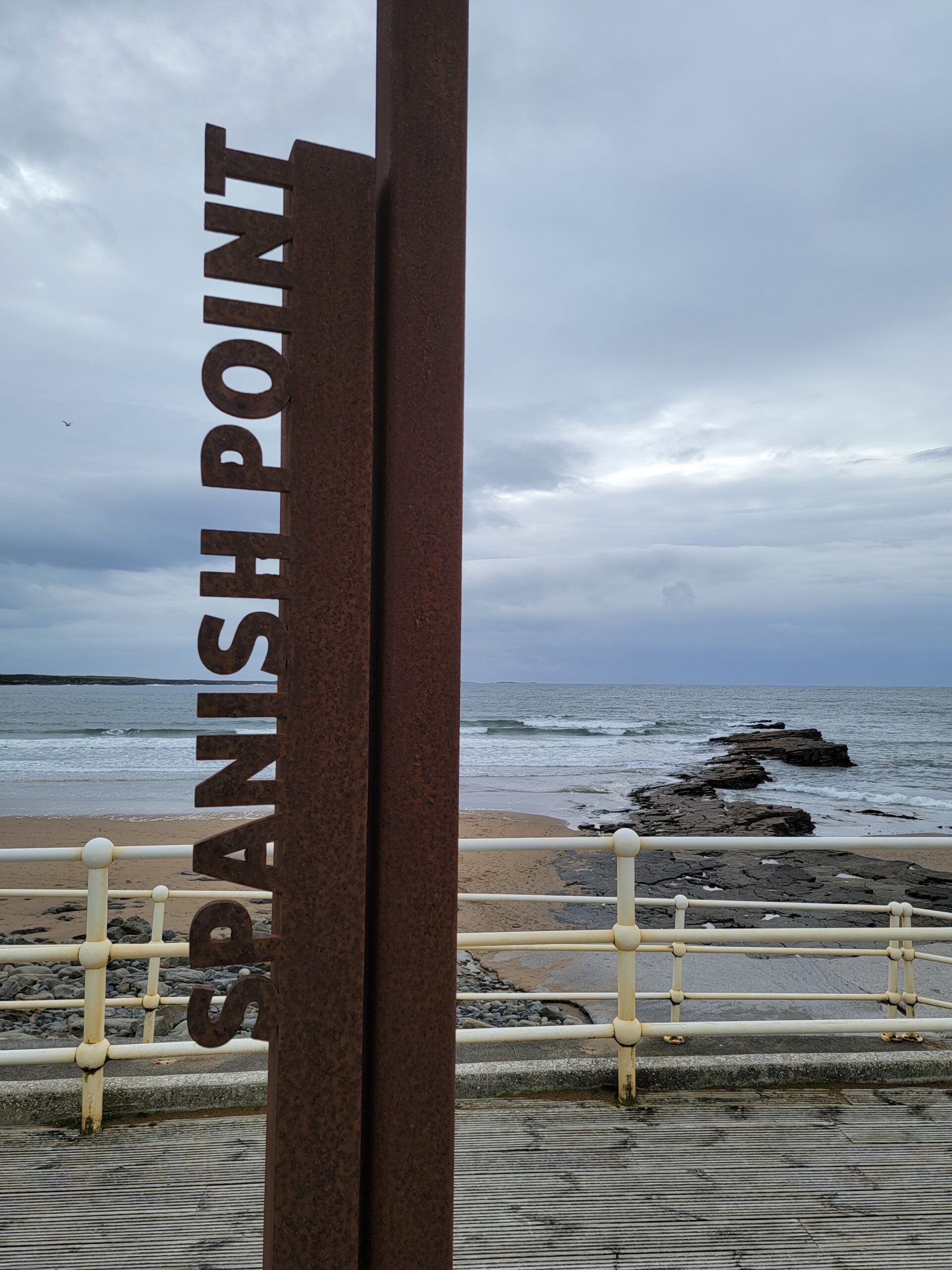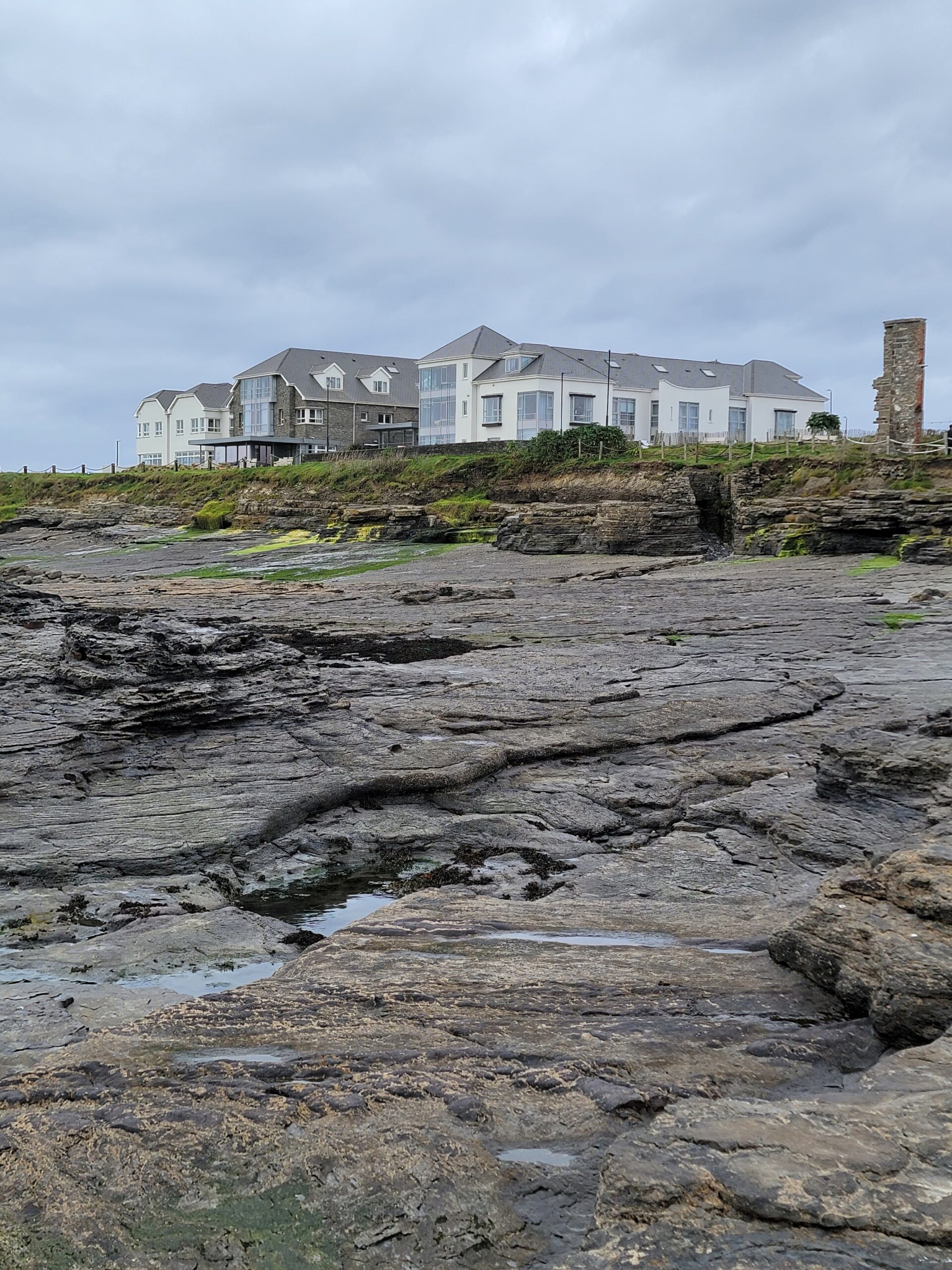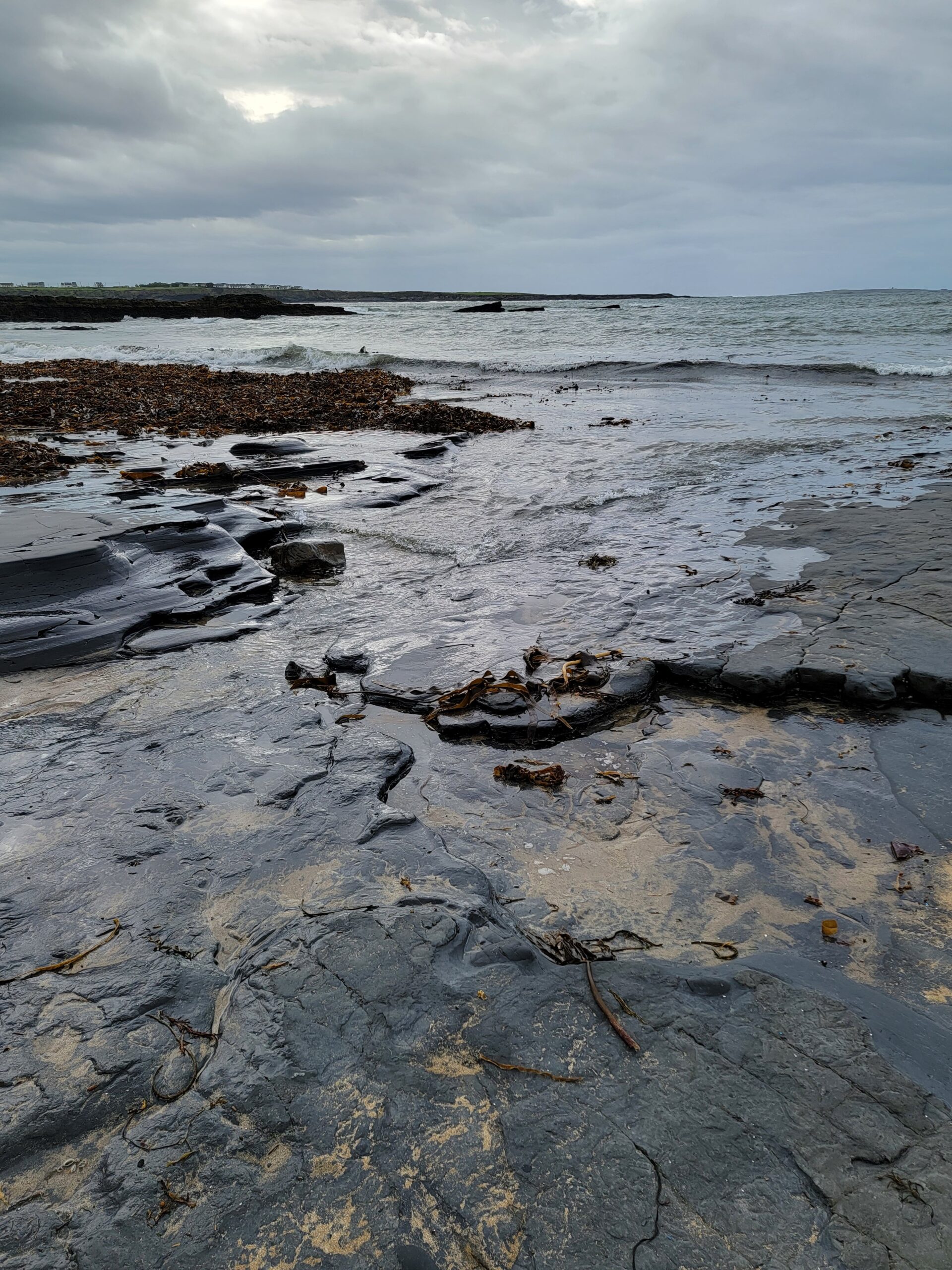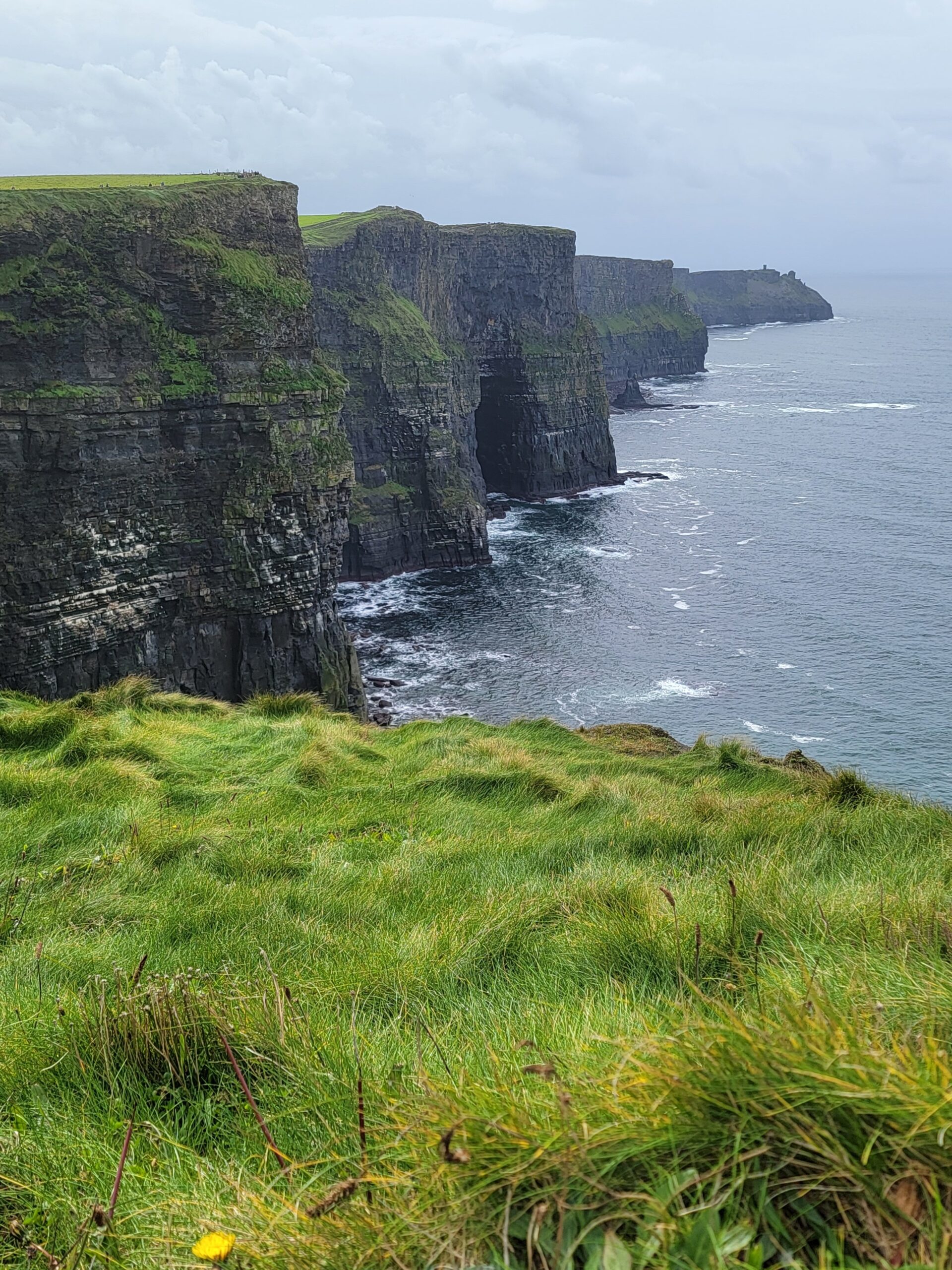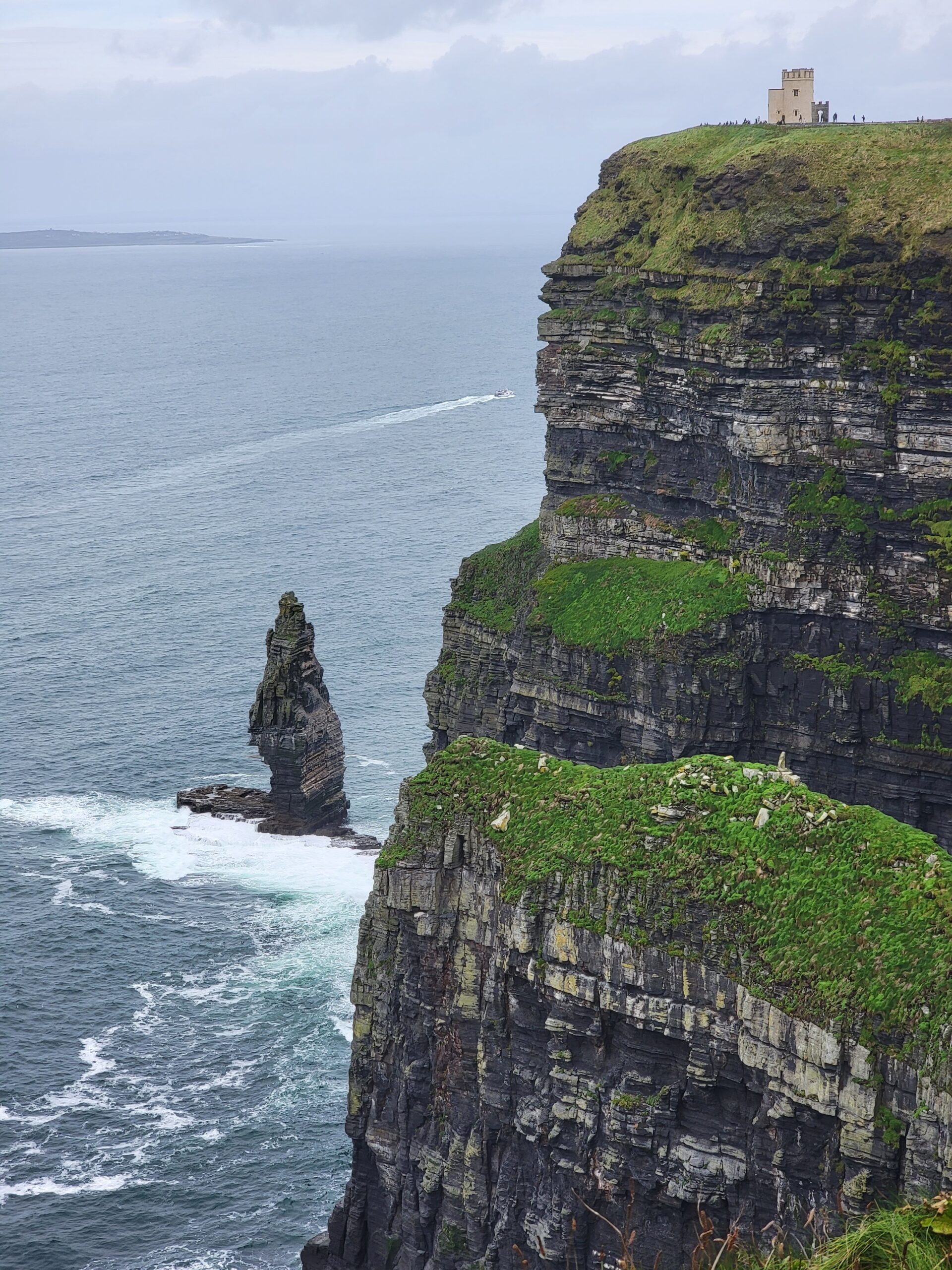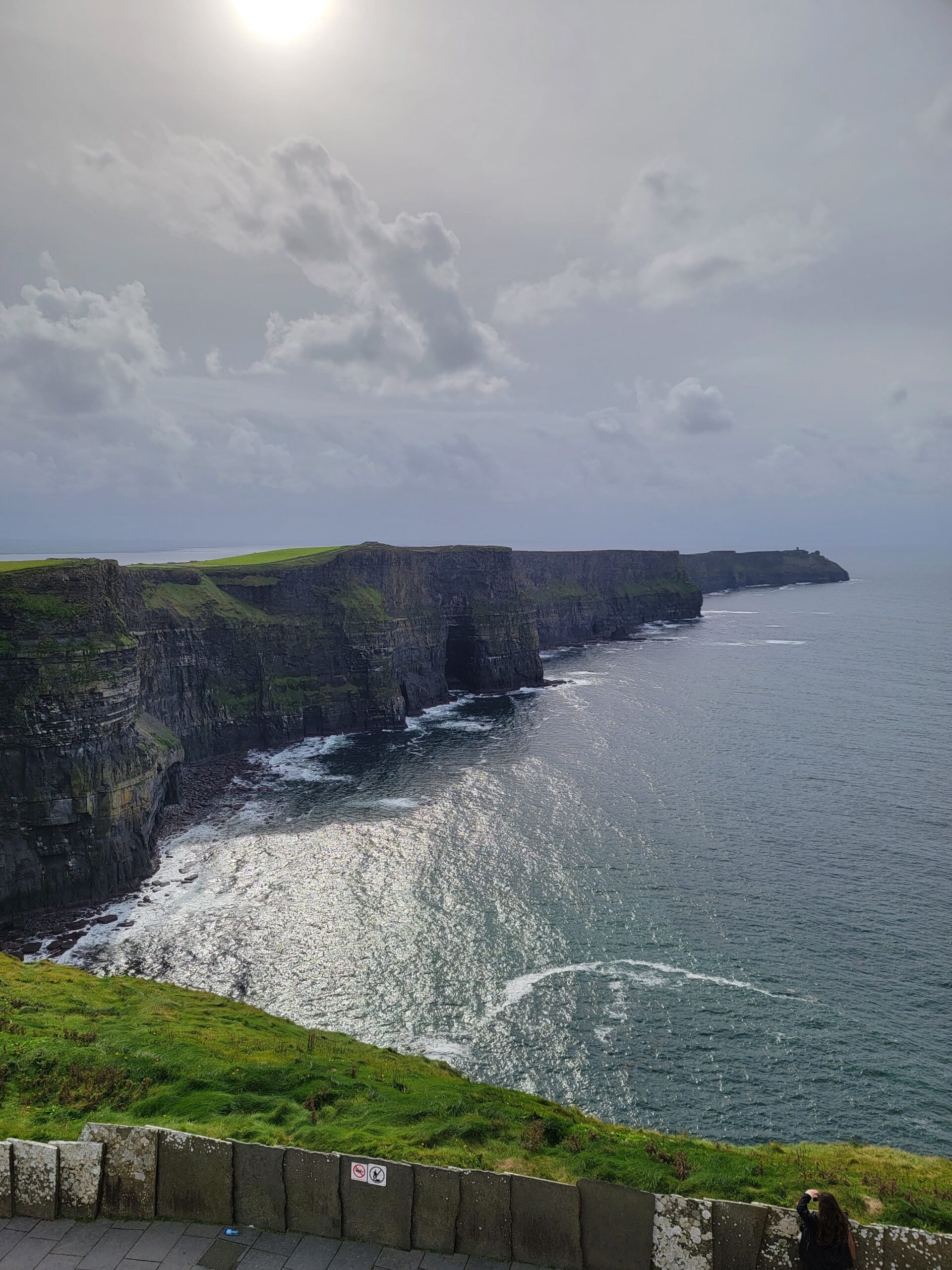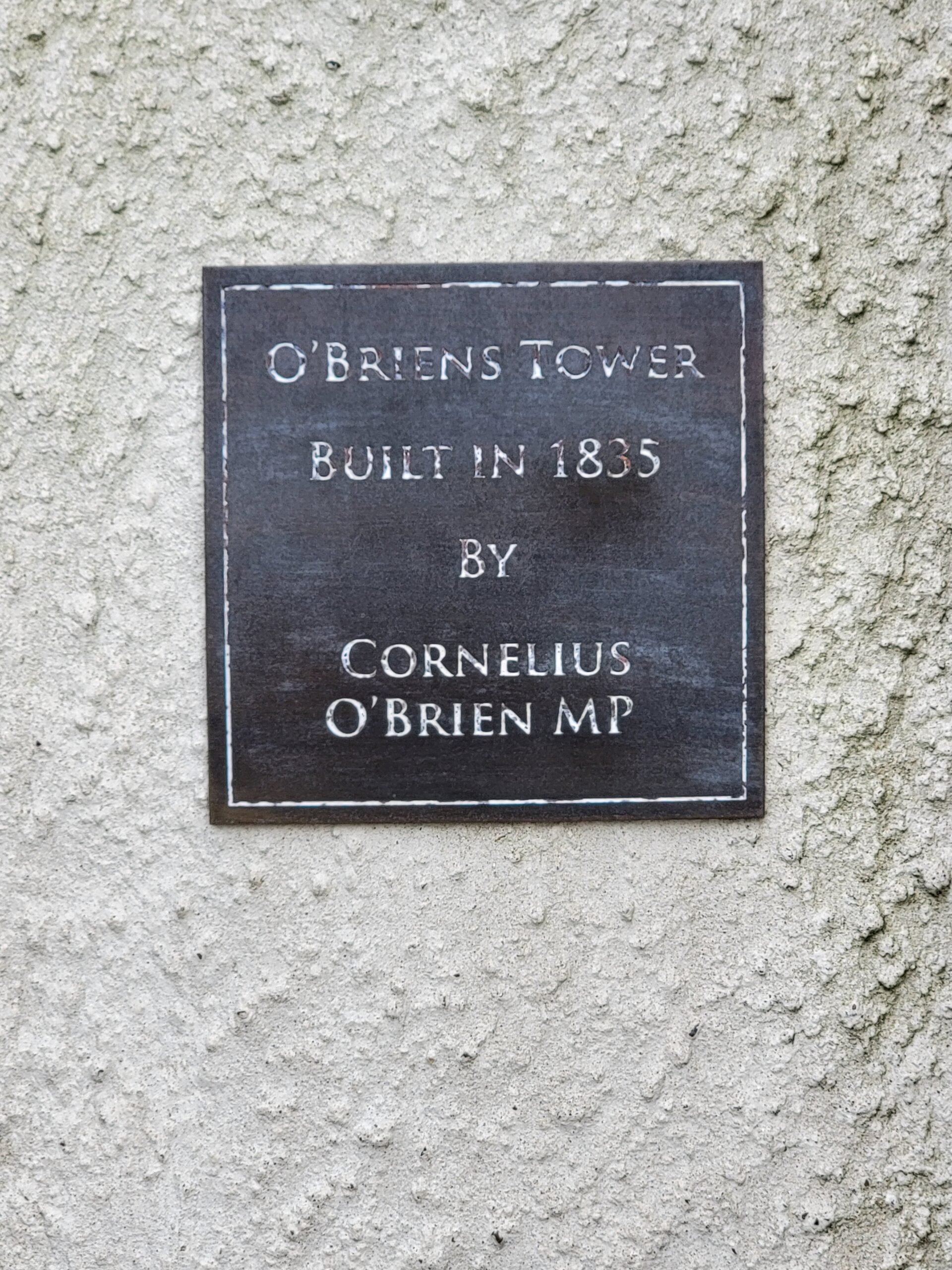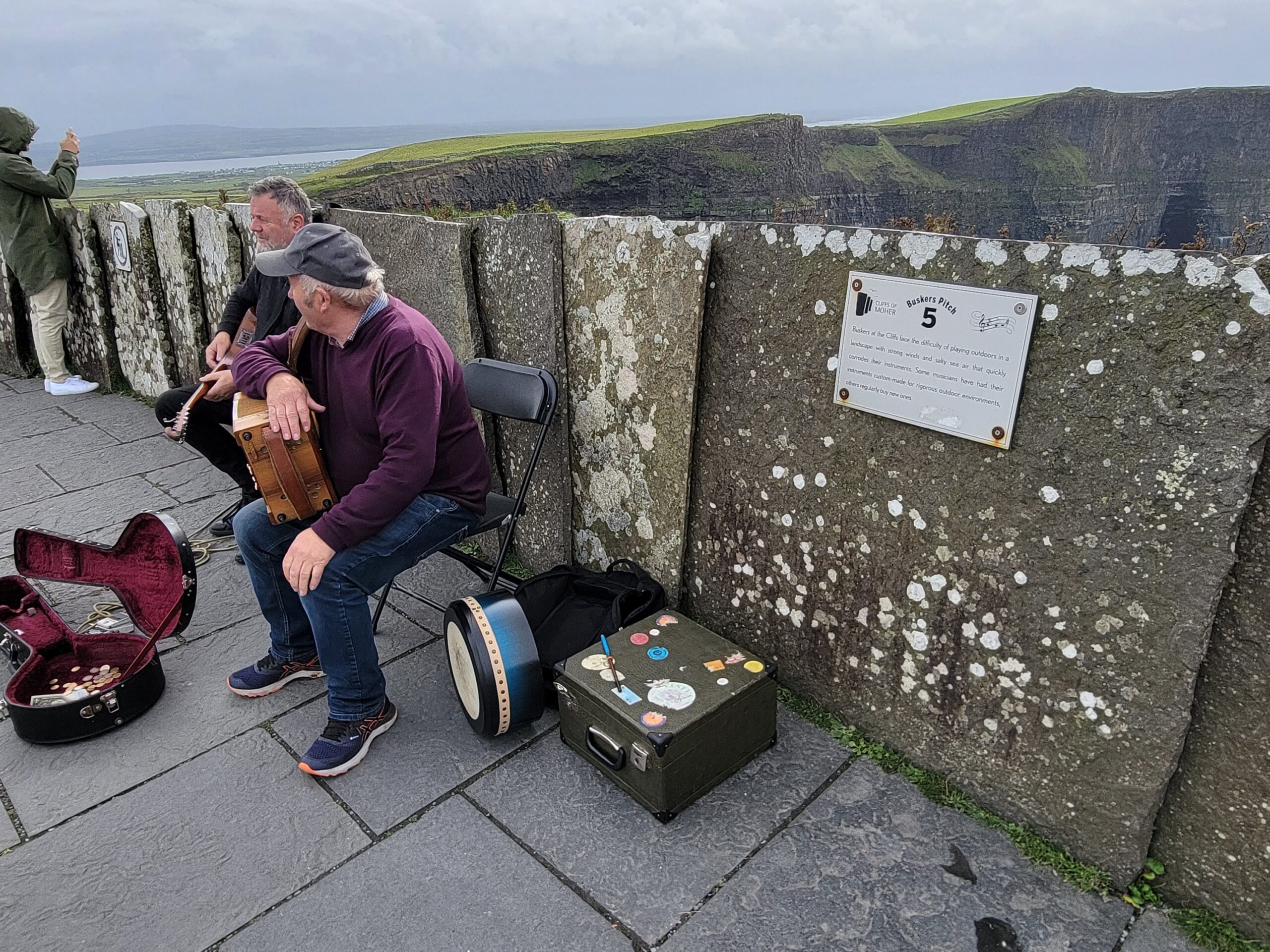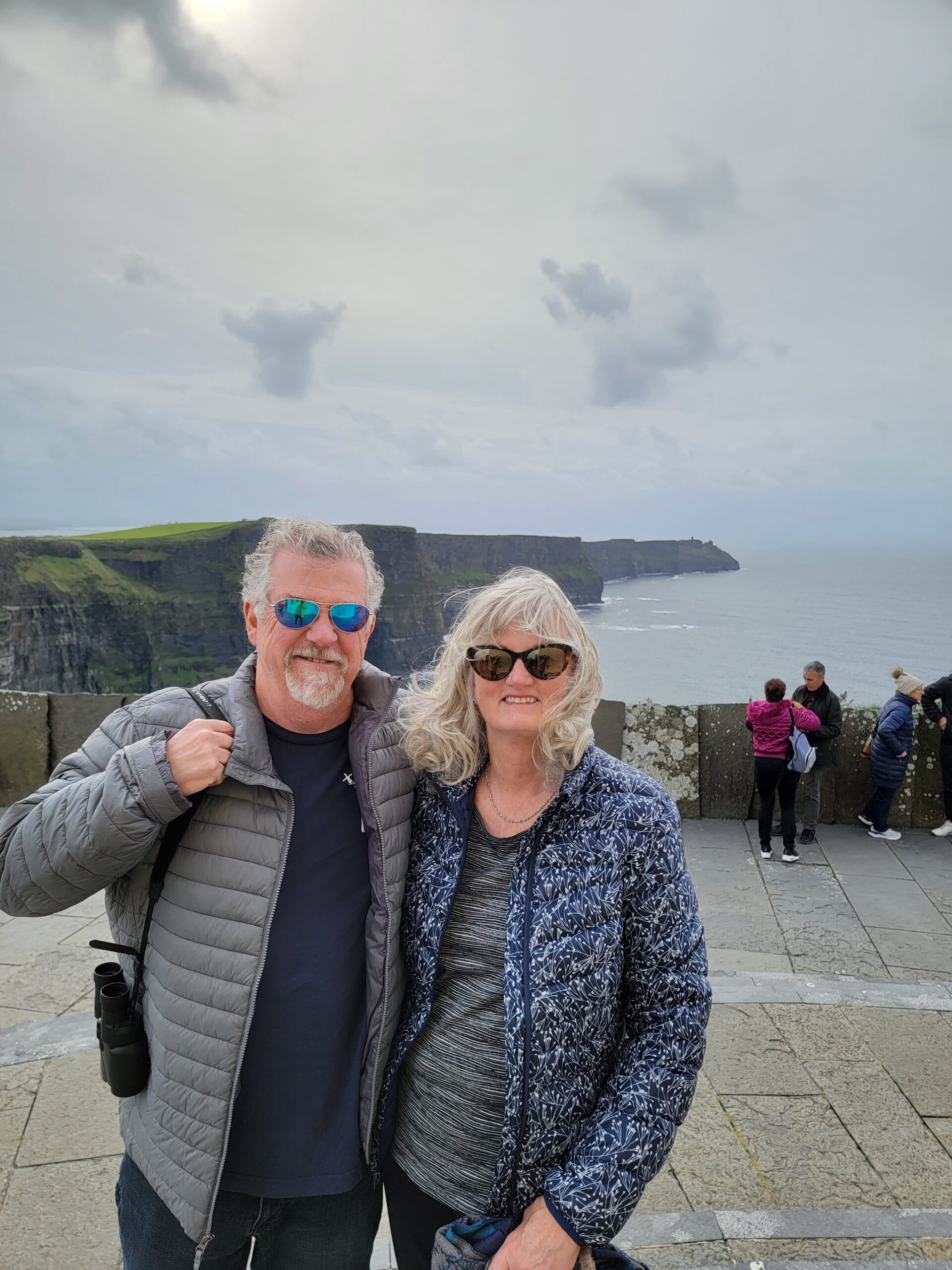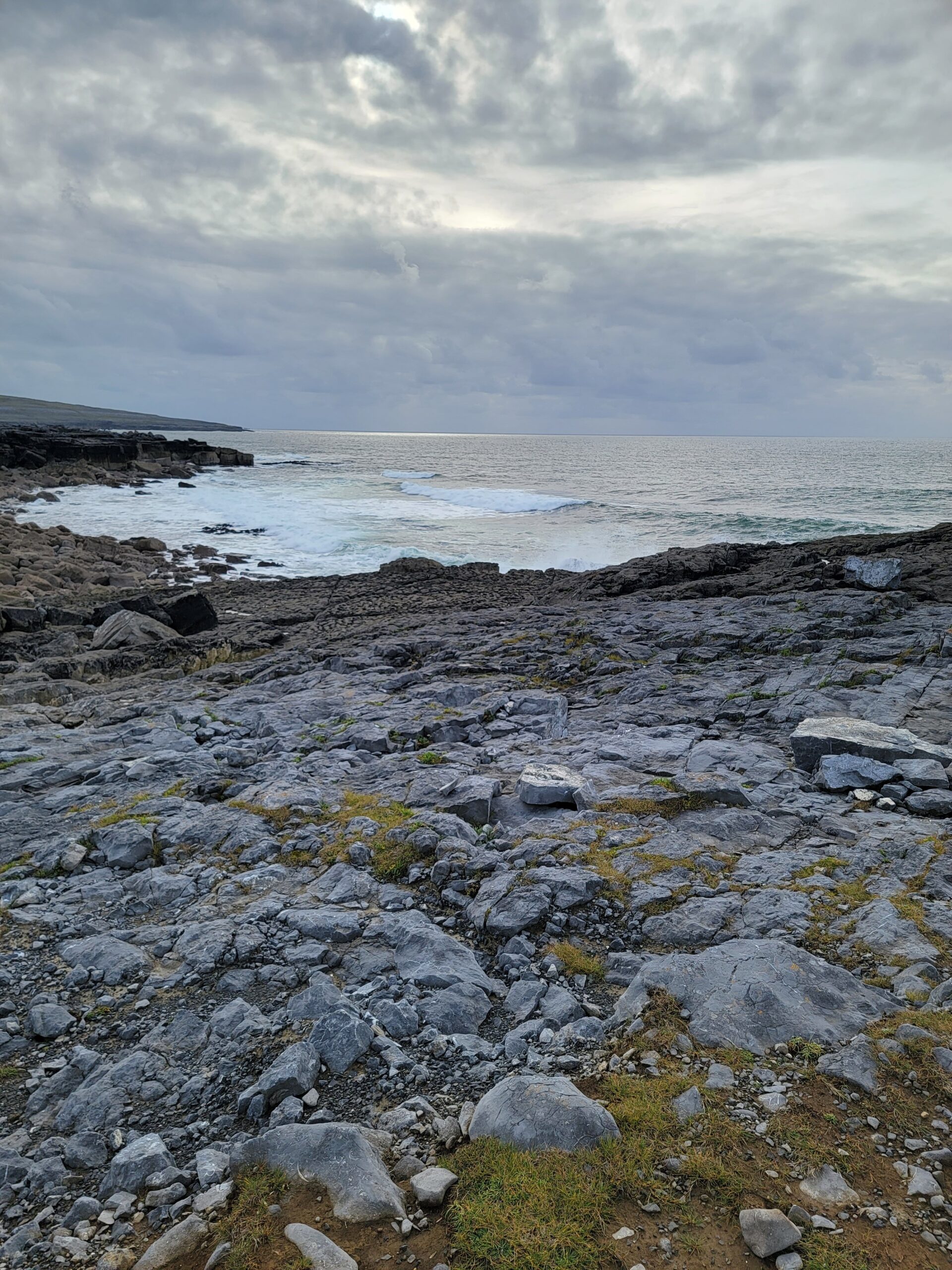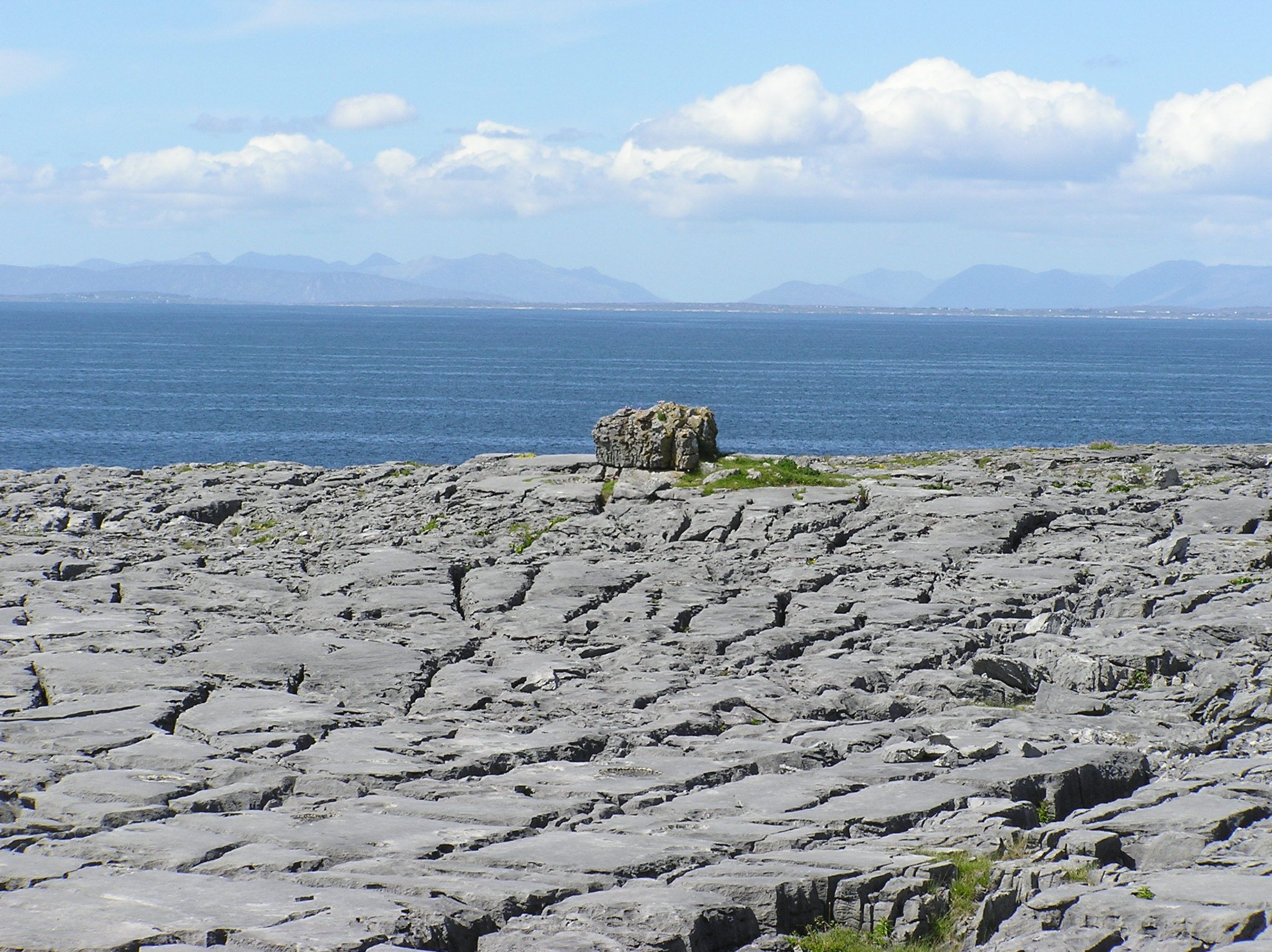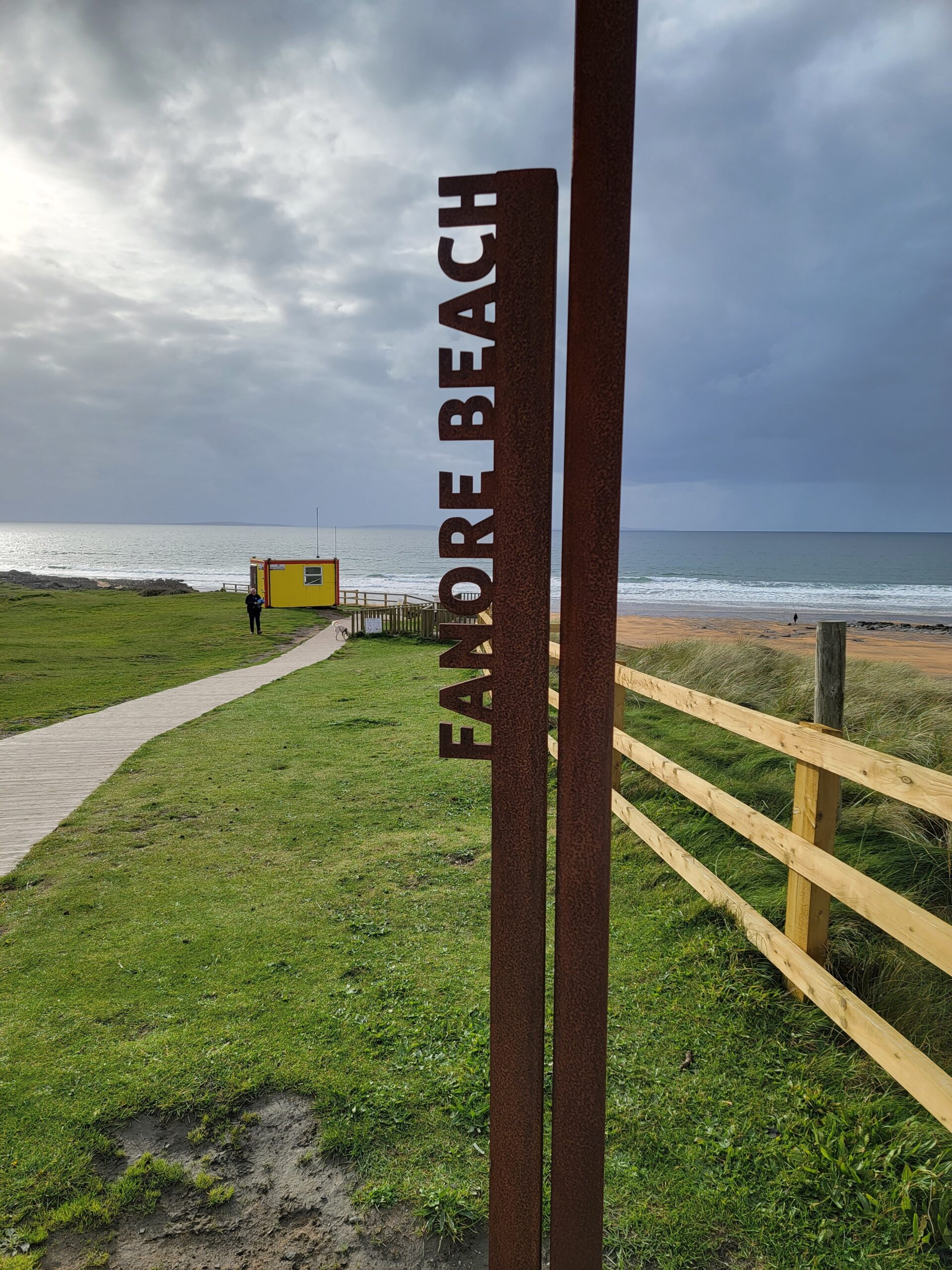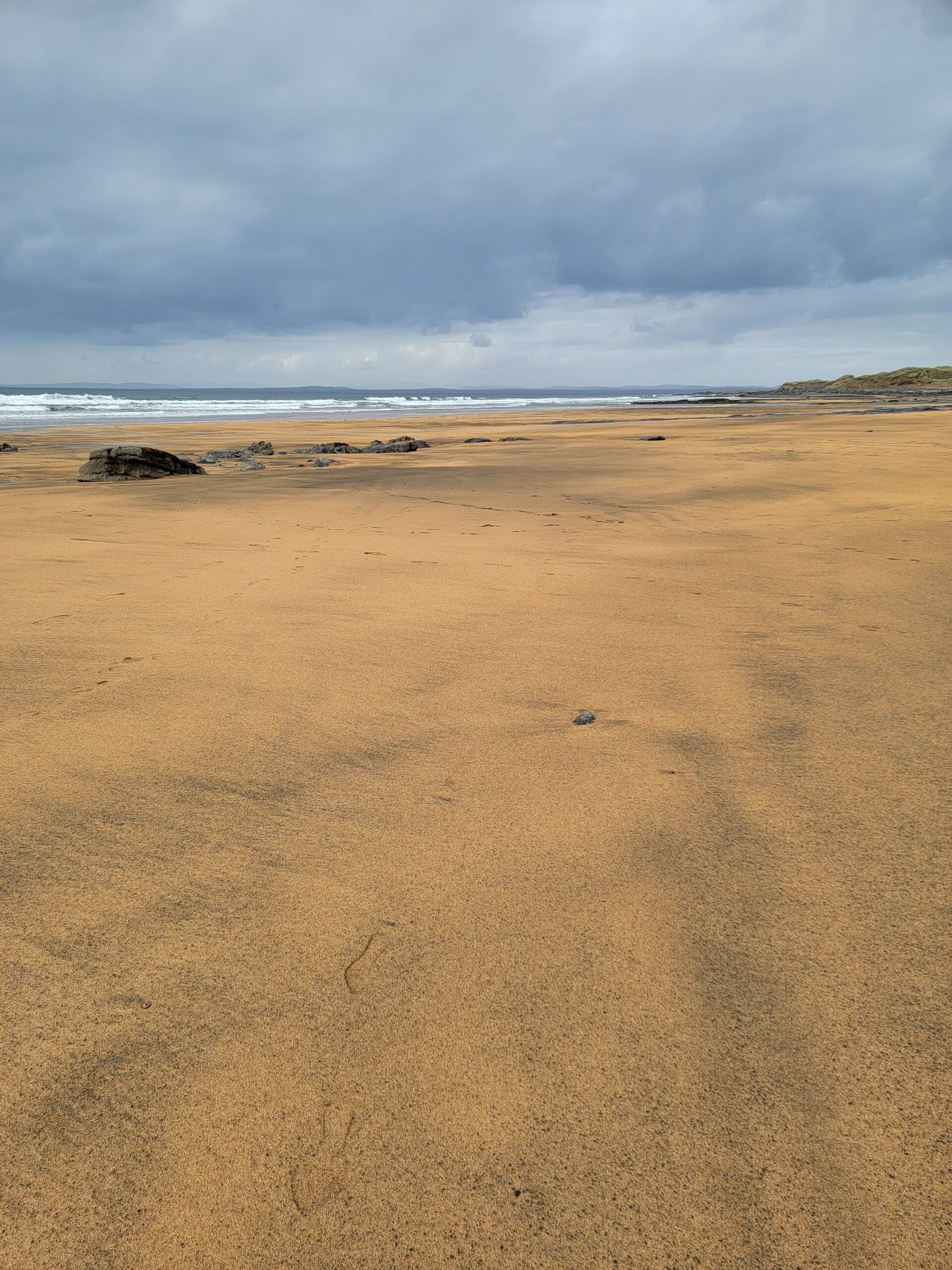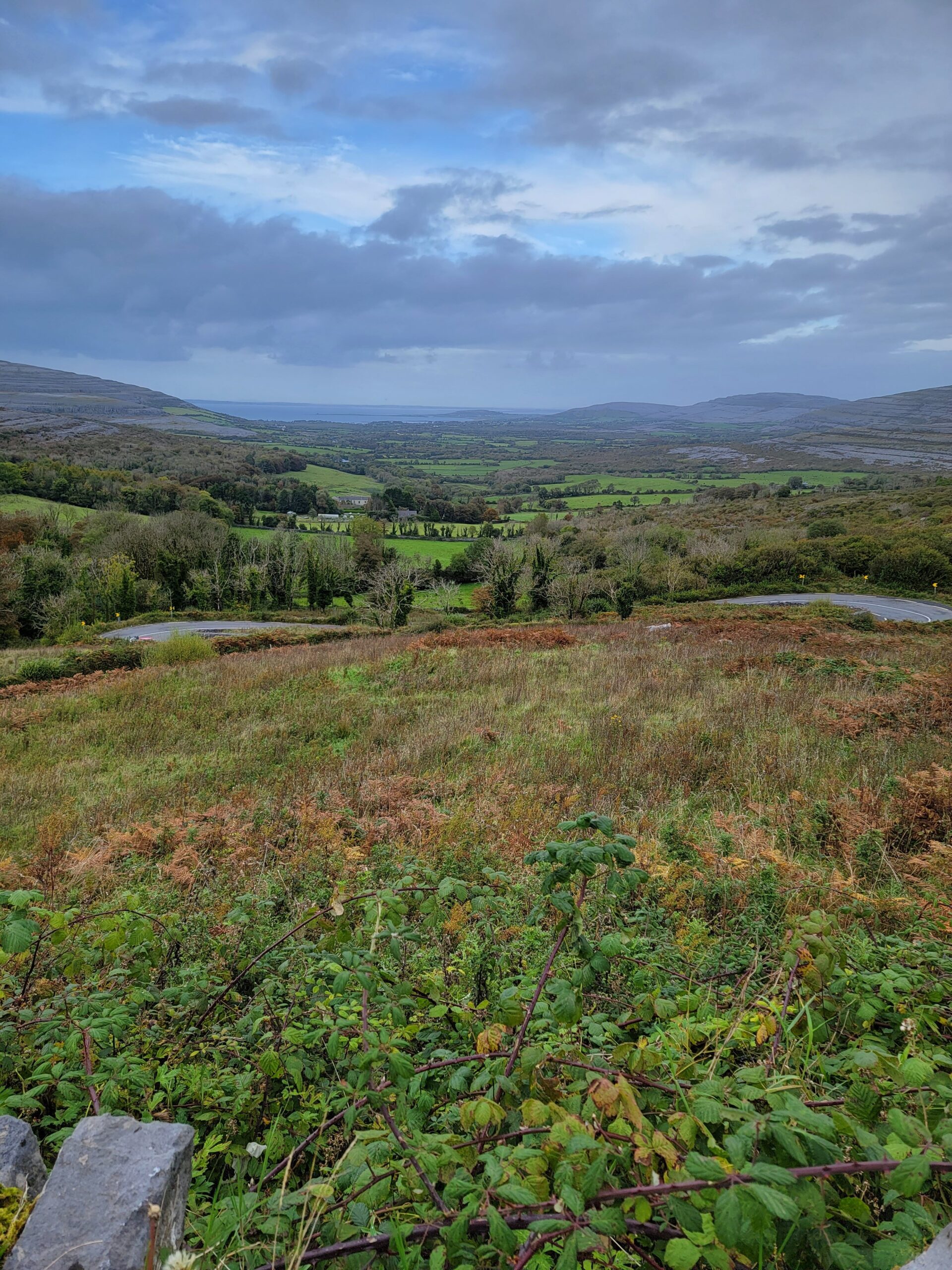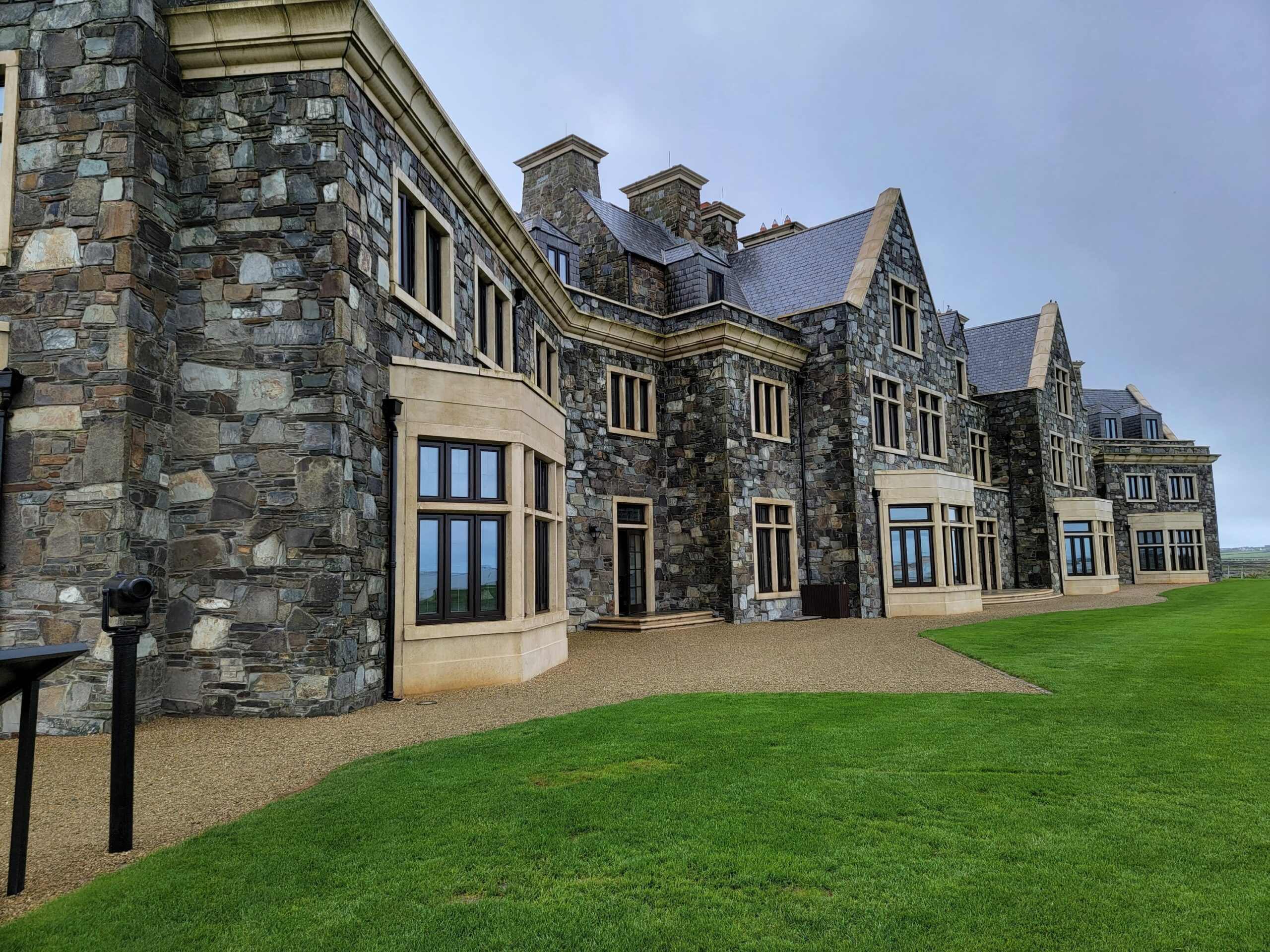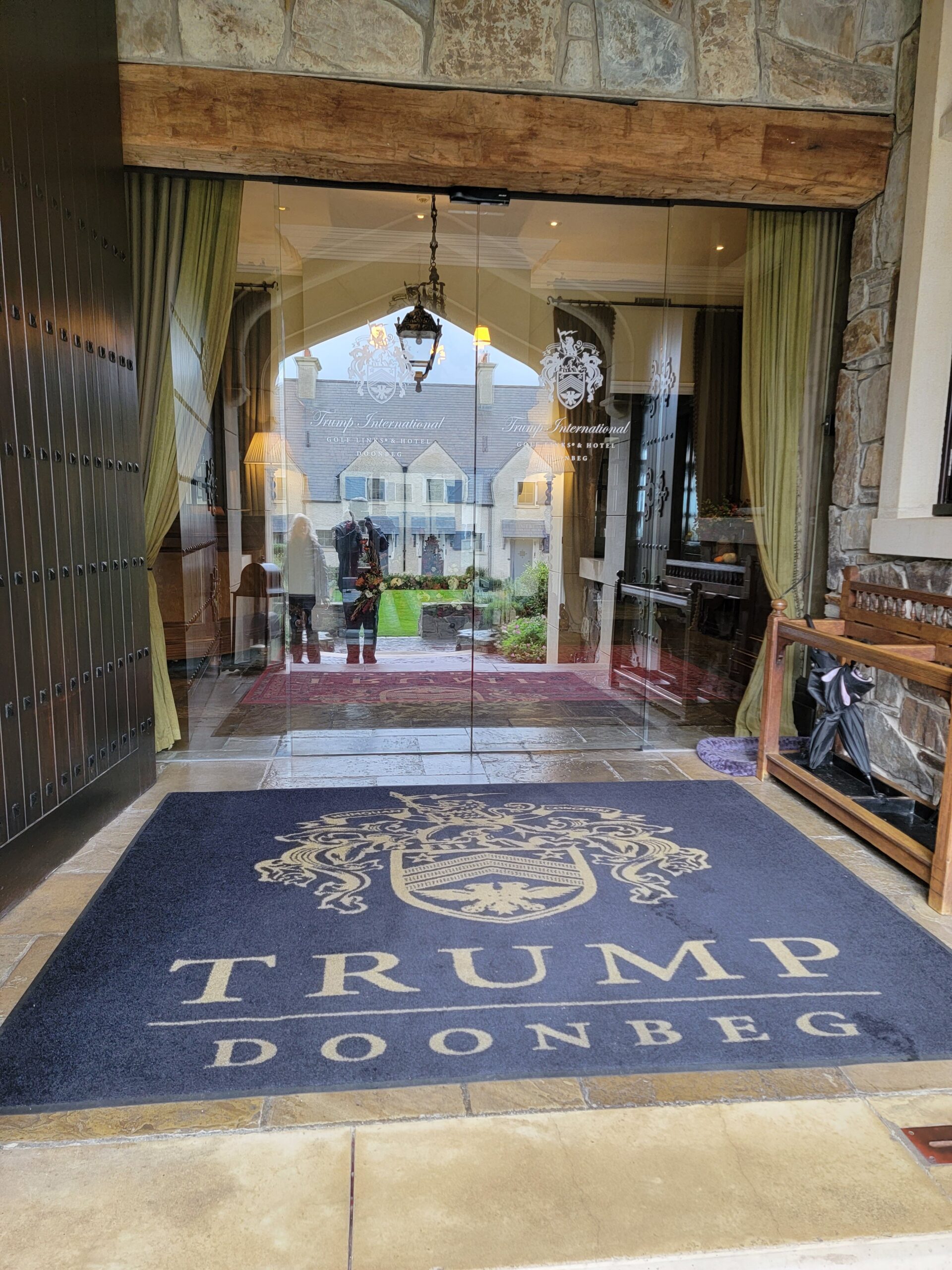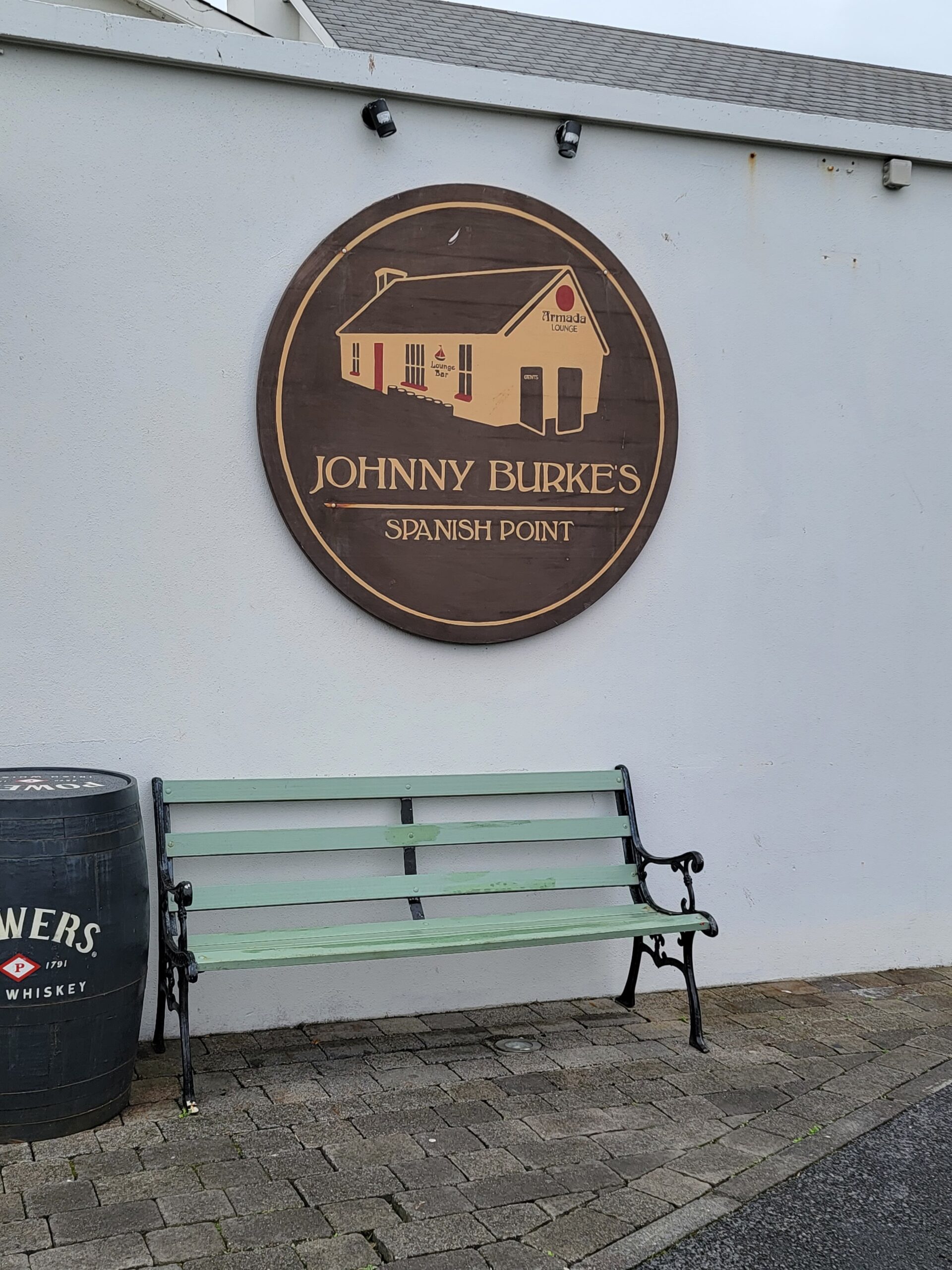We ventured to Galway as it’s the gateway to the Aran Islands, something we wanted to visit in Ireland. Galway is a pretty good sized city with a LOT of traffic. Fortunately we only drove one day while we were here. We arrived in the city fairly early and the weather was excellent, so we took a walk around through the Latin Quarter and visited the Spanish Arch.
The Spanish Arch was built in 1584 as an extension of the city wall to the bank of the River Corrib. This photo of the river is taken directly in front of the Spanish Arch. This is supposedly the “fastest shortest” river in Ireland. Not the “fastest” or the “shortest”, but the “fastest shortest”. The Irish will take credit for pretty much anything!
A historical depiction from the 1650’s shows the original 4 arches, but a tsunami from the Lisbon earthquake of 1755 destroyed part of the wall and swept away two arches. I’m pretty shocked that a tsunami of that magnitude made it all the way here from Lisbon, but that earthquake did pretty much level Lisbon.
The site is called the Spanish Arch because of how much trade Galway had with Spain, with Spanish galleons often docked directly adjacent to the Arch. Christopher Columbus actually visited Galway in 1477, and likely moored his ship right next to the Arch.
Adjacent to this site it appears somebody has tried to impersonate Banksy. I leave the reader to decide the message here.
One last night time shot. You can see the edge of the second arch, referred to as a “blind arch” that doesn’t go all the way through the wall.
Galway was at one time run by The Tribes of Galway, a group of 14 merchant families who held the political power in the city. One of those families, the Brownes, had a house that was built in 1627, and it was being removed in 1905 during expansion of the city. They decided to preserve the doorway to the house and placed it in their main park, Eyre Square.
It looked so out of place, but as one of our tour guides told us, the Irish love to move shit around all the time. Here is that guide (pretty sure his name was Brian) below, from “Tribes Tours of Galway” (highly recommended)!
He took us down into the lower level of a shopping mall so we could see one of the last surviving portions of the original wall that surrounded the city. This was found when they were excavating to build the mall.
We then visited Lynch’s Castle, built in the late 1500’s by one of the 14 Tribes, the powerful Lynch family. The bank acquired the building in the 1930’s.
These historical markers are everywhere throughout town.
Here is a depiction of the building during it’s heyday.
Our guide told us a story about James Lynch, then the mayor of Galway, who’s son Walter murdered a visiting Spanish sailor because of how much attention his girlfriend was giving him. James took it upon himself to hang his own son from a window of the house, while most of the town was gathered below. They relocated the window in question in 1978, to a spot maybe 200 yards away. Why? I have no idea. Our guide did say to take the entire story with a grain of salt.
My first clue that this story is bullshit is that the event was supposed to happen in 1493, yet pretty much every historical site states the house was completed in the late 1500’s. I think their math might be a tad off!
Adjacent to the Spanish Arch is the Galway City Museum. We spent about two hours here as it was POURING outside, but this is a very worthwhile visit, regardless of the weather. It gives a lot of political history of Galway, but also focuses on the surrounding area, including The Claddagh and Aran Islands. One of the most impressive features is a full size replica of the traditional Galway Hooker Boats, used in the region for fishing from the the late 1700’s to the mid 1800’s.
They also have the oldest known Claddagh Ring, dated to 1700, created by Richard Joyce, the inventor of the design. These are very popular rings in Ireland, but particularly in Galway, since the Claddagh village is just across the River Corrib.
They have a viewpoint looking across the River Corrib into Claddagh, with a map pointing out the various points of interest. So glad we were indoors at this point!
We took a wet walk in the rain to visit the Galway Cathedral, which we were told is stunning. There was a wedding going on, so I only took the one photo. Turned out a bit fuzzy…maybe my lens was wet? It was POURING outside.
The Spanish Arch gets way too much attention in this town, but I found this artwork from 1838 in the museum pretty nice, so I had to include it.
Next up, we visit the Aran Island Inis Mor.
